Table of contents
Why Air Source Heat Pumps Are Revolutionizing Home Comfort
An air source heat pump is a versatile HVAC system that transfers heat between your home and the outdoor air to provide both heating and cooling from a single unit. Unlike traditional systems that burn fuel or use electric resistance heating, heat pumps move existing heat from one place to another - making them up to three times more efficient than conventional heating methods.
Key Benefits of Air Source Heat Pumps:
- All-in-one solution - Provides heating, cooling, and dehumidification
- Energy efficient - Can deliver 3-4 times more heat energy than electrical energy consumed
- Environmentally friendly - No direct emissions or combustion fumes
- Year-round comfort - Works effectively even in freezing temperatures down to -25°C
- Better indoor air quality - No combustion means cleaner air inside your home
- Cost savings - Lower energy bills compared to electric resistance or fossil fuel systems
Heat pumps are like magic, but it's all science. As one industry expert puts it, these systems work by absorbing heat from outdoor air (even when it's freezing), boosting it to a higher temperature, and transferring it into your home to keep you warm.
The technology has come a long way since the first air source heat pump was built in 1857. Today's modern units can operate efficiently in Birmingham's climate year-round, providing reliable comfort whether you're dealing with our hot, humid summers or those occasional chilly winter nights.
For Birmingham homeowners tired of dealing with separate heating and cooling systems, rising energy bills, or poor indoor air quality from combustion-based heating, air source heat pumps offer a single solution that addresses all these concerns while reducing your carbon footprint.
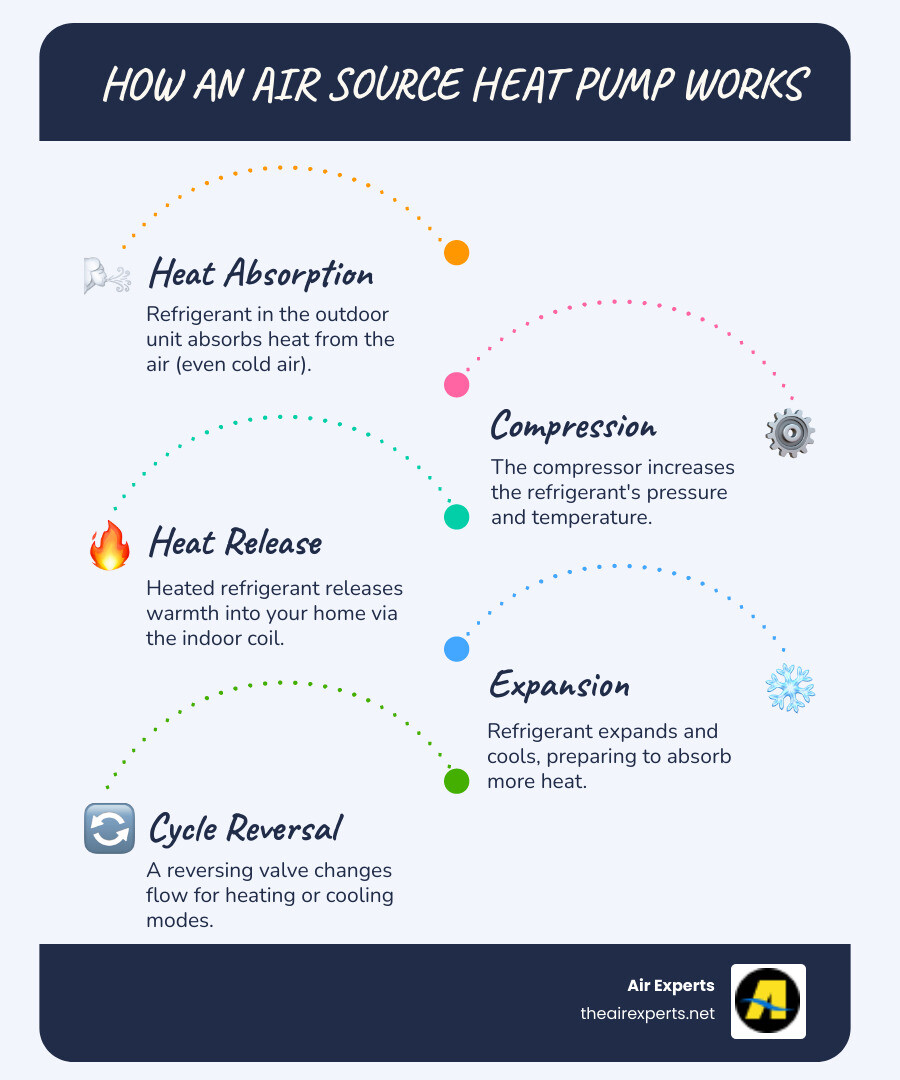
Common air source heat pump vocab:
How It Works: The Science of Moving Heat
The magic behind an air source heat pump lies in a beautifully simple concept: instead of creating heat, it moves heat from one place to another. Think of it like a heat taxi service for your home. While traditional furnaces burn fuel or use electric resistance to generate warmth, heat pumps are much smarter - they capture existing heat energy and relocate it where you need it most.
This brilliant process is called the vapor compression cycle, and it's the same technology that keeps your refrigerator cold and your car's AC running. The star of the show is a special fluid called refrigerant, which has an amazing ability to change between liquid and gas states at different temperatures and pressures.
Here's how your air source heat pump performs this thermal magic trick:
The outdoor unit contains an evaporator coil where liquid refrigerant absorbs heat from the outside air - yes, even when it's freezing cold outside. As the refrigerant soaks up this heat energy, it transforms into a low-pressure gas. Next, this gas travels to the compressor, which is essentially the heart of your heat pump. The compressor squeezes the gas, dramatically boosting both its pressure and temperature.
The now super-heated gas moves to the indoor coil, called the condenser, where it releases all that captured heat into your home's air. As it cools down, the gas condenses back into a high-pressure liquid. Finally, this liquid passes through an expansion valve that drops its pressure and temperature, preparing it to start the whole cycle over again.
When summer arrives and you need cooling, the air source heat pump simply reverses this process. The outdoor coil becomes the heat releaser, and the indoor coil becomes the heat absorber - essentially turning your home into a giant refrigerator. This dual personality makes heat pumps incredibly versatile year-round comfort systems.
You can dive deeper into this fascinating technology on the Energy.gov website, or explore more info about AC and Heat Pump systems to understand how these systems work with your home's overall HVAC setup.
Understanding the Air Source Heat Pump Cycle
The real genius of an air source heat pump lies in how its key components work together like a perfectly choreographed dance. The indoor and outdoor coils, compressor, and reversing valve each play crucial roles in moving heat exactly where you want it.
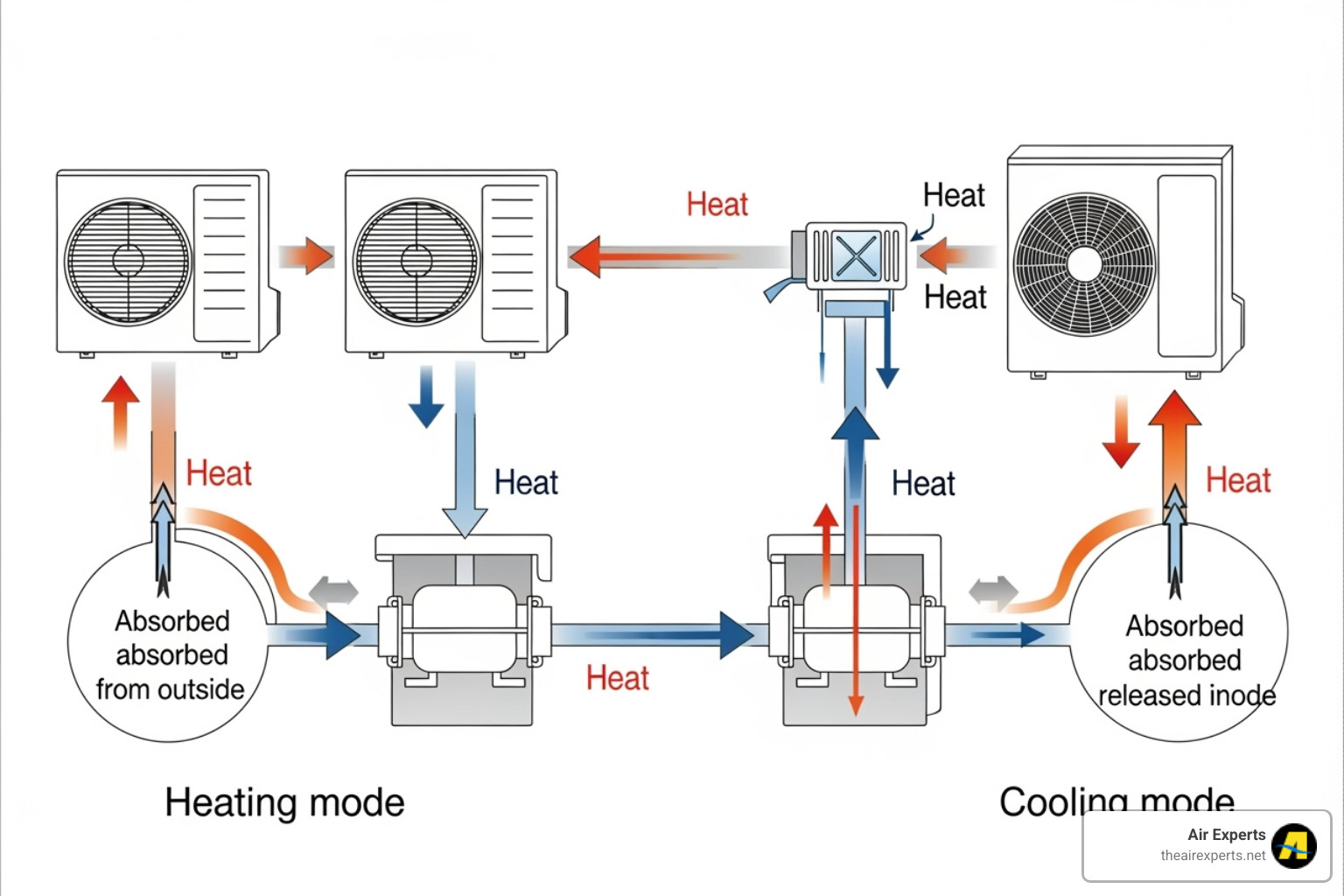
The reversing valve is the clever little component that gives your heat pump its split personality. With a simple flip, it changes the direction of refrigerant flow, essentially swapping the jobs of the indoor and outdoor coils. It's like having a traffic director that can instantly reverse the flow on a busy highway.
During colder months, you might notice something interesting happening with your outdoor unit. When moisture in the air freezes on the outdoor coil, creating frost or ice buildup, your air source heat pump automatically kicks into what's called a defrost cycle. Don't worry - this is completely normal and actually pretty smart.
During defrost mode, your heat pump briefly switches into cooling mode, sending warm refrigerant to the outdoor coil to melt away the ice. You might see steam rising from your outdoor unit during this time, which looks dramatic but is just the ice melting away. Once the coil is clear, the system switches back to normal heating operation. This self-cleaning feature ensures your heat pump keeps running efficiently even when Mother Nature throws ice and snow at it. You can learn about the defrost cycle in more detail to understand exactly what's happening during these brief reversals.
Benefits Over Traditional Systems
Birmingham homeowners are finding why air source heat pumps are becoming the go-to choice for modern home comfort. The advantages over traditional heating and cooling systems are pretty impressive when you look at the bigger picture.
Energy efficiency is where heat pumps really shine. While even the best gas furnace might convert 95% of its fuel into heat, an air source heat pump can deliver three to four times more heat energy than the electrical energy it consumes. It's like getting four dollars of heating for every one dollar you spend on electricity - now that's smart money management.
This incredible efficiency translates directly into lower energy bills. Since heating and cooling typically account for about half of your annual energy costs, switching to a heat pump can put serious money back in your pocket. Many homeowners see substantial savings compared to electric resistance heating or oil systems.
The single unit convenience is another game-changer. Instead of juggling a separate furnace, air conditioner, and possibly a dehumidifier, one air source heat pump handles your heating, cooling, and moisture control needs. It's like having a Swiss Army knife for home comfort - one tool that does multiple jobs exceptionally well.
Better indoor air quality is a benefit many people don't expect. Traditional combustion-based systems can introduce pollutants and fumes into your home, especially if they're not perfectly maintained. Heat pumps produce no direct emissions and continuously filter your air as they circulate it, creating a cleaner, healthier breathing environment for your family.
From an environmental standpoint, heat pumps are helping homeowners reduce their carbon footprint significantly. As our electrical grid increasingly relies on renewable energy sources, air source heat pumps become even more environmentally friendly. They're playing a key role in moving homes away from fossil fuel dependence while maintaining the comfort we all expect.
The dehumidification benefit is especially valuable here in Alabama's humid climate. While your heat pump keeps you cool in summer, it's also pulling excess moisture from your indoor air, making your home feel more comfortable at higher temperatures and potentially allowing you to save even more on cooling costs.
Choosing Your System: Types of Air Source Heat Pumps
When you start shopping for an air source heat pump, you'll quickly find that there's no one-size-fits-all solution. The good news? This variety means there's likely a perfect match for your specific home and comfort needs. Let's break down the main types so you can make an informed decision.
The two primary categories you'll encounter are ducted systems and ductless systems. Ducted systems work with your home's existing ductwork (or new ducts if needed) to distribute conditioned air throughout your house, much like a traditional central air system. These are ideal if you already have ductwork in good condition and want whole-home comfort from a single outdoor unit.
Ductless systems, on the other hand, don't require any ductwork at all. Instead, they use individual indoor units mounted on walls or ceilings, connected to an outdoor unit by refrigerant lines. This makes them perfect for homes without existing ducts, room additions, or situations where you want different temperature zones.
You'll also see systems described as split or packaged units. Split systems have separate indoor and outdoor components connected by refrigerant lines - this is the most common configuration. Packaged units house all components in a single outdoor cabinet, though these are less common for residential applications.
Another important distinction is between single-zone and multi-zone systems. A single-zone system serves one area of your home, while multi-zone systems can handle multiple rooms or areas with individual temperature control for each zone. Multi-zone systems are fantastic if different family members prefer different temperatures or if you have rooms that are used differently throughout the day.
For Birmingham homeowners considering installation, understanding these options helps ensure you get the right system for your specific situation. More info on Heat Pump Installation in Birmingham AL can help you explore what works best for your home.
Ducted, Ductless, and Hybrid Systems
Ducted systems are probably what most people picture when they think of central air conditioning - and heat pumps can work the same way. These systems use your home's existing ductwork to distribute heated or cooled air throughout the house. If you already have ducts from a previous central system, a ducted air source heat pump can often use that same infrastructure, making installation more straightforward.
The beauty of ducted systems lies in their ability to provide consistent, whole-home comfort from a single outdoor unit. They're also less visible inside your home since the only indoor components you'll see are the vents and possibly the air handler (often located in a basement, attic, or utility closet).
Ductless mini-split systems offer a completely different approach. These systems consist of one outdoor unit connected to one or more indoor units via refrigerant lines that require only a small hole through the wall. Each indoor unit can be controlled independently, giving you incredible flexibility in how you heat and cool different areas of your home.
Mini-splits are particularly popular for room additions, converted garages, or older homes that never had ductwork installed. They're also great for creating comfort zones - maybe you want the bedroom cooler at night while keeping the living areas warmer. The U.S. Department of Energy provides detailed information about ductless mini-split heat pumps if you want to dive deeper into this technology.
Hybrid systems represent an interesting middle ground, combining an air source heat pump with a traditional furnace. In this setup, the heat pump handles most of the heating and all of the cooling, but when temperatures drop below a certain point (called the balance point), the system automatically switches to the furnace. This dual-fuel approach ensures you always have efficient heating, regardless of outdoor conditions.
Comparison with Other Home Comfort Systems
Understanding how air source heat pumps stack up against traditional systems helps clarify why they're becoming so popular. Unlike furnaces that burn gas or oil to create heat, heat pumps simply move existing heat from outside to inside your home. This fundamental difference makes them much more energy-efficient.
Traditional central air conditioners only provide cooling, requiring a separate heating system like a furnace or boiler. An air source heat pump does both jobs with a single system, which can mean lower installation costs and simplified maintenance.
Installation differences are worth noting too. If you're replacing an existing central air system, installing a ducted heat pump is often straightforward since the ductwork is already in place. However, if you're coming from a boiler or radiator system, you might need new ductwork installed, or you could consider ductless options instead.
From an efficiency standpoint, modern air source heat pumps significantly outperform traditional electric resistance heating and can be more cost-effective than gas furnaces in many situations, especially as natural gas prices fluctuate.
At Air Experts, we help Birmingham homeowners steer these choices based on their specific homes, comfort preferences, and budget considerations. Every home is unique, and the best system for your neighbor might not be the best system for you.
.svg)
.svg)
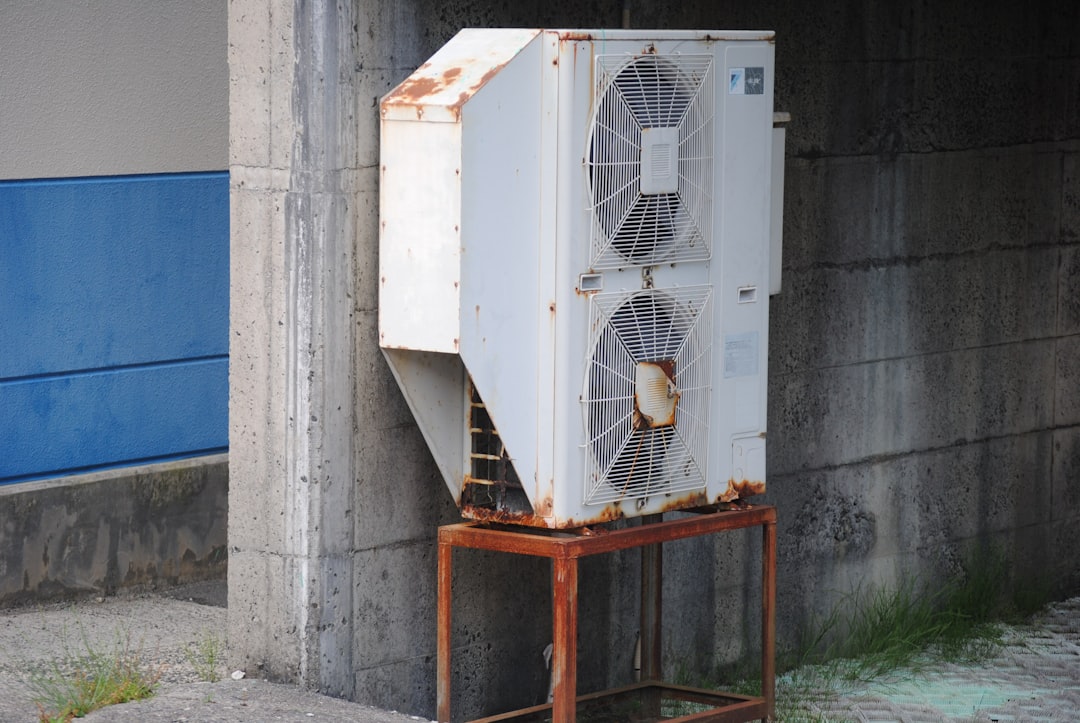
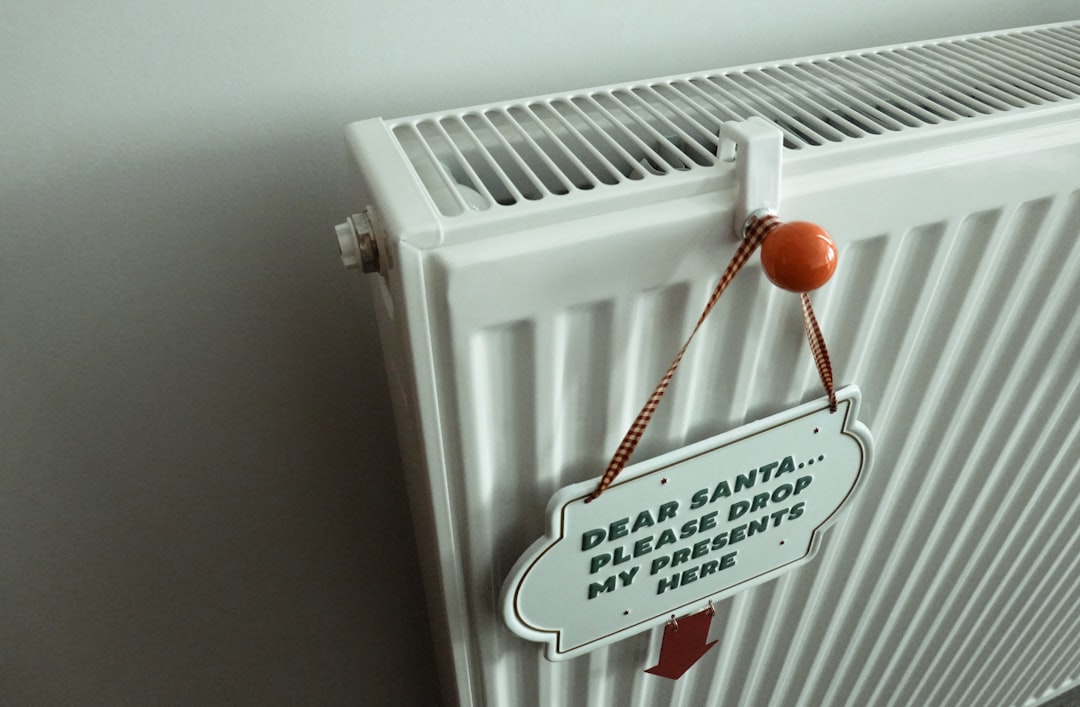

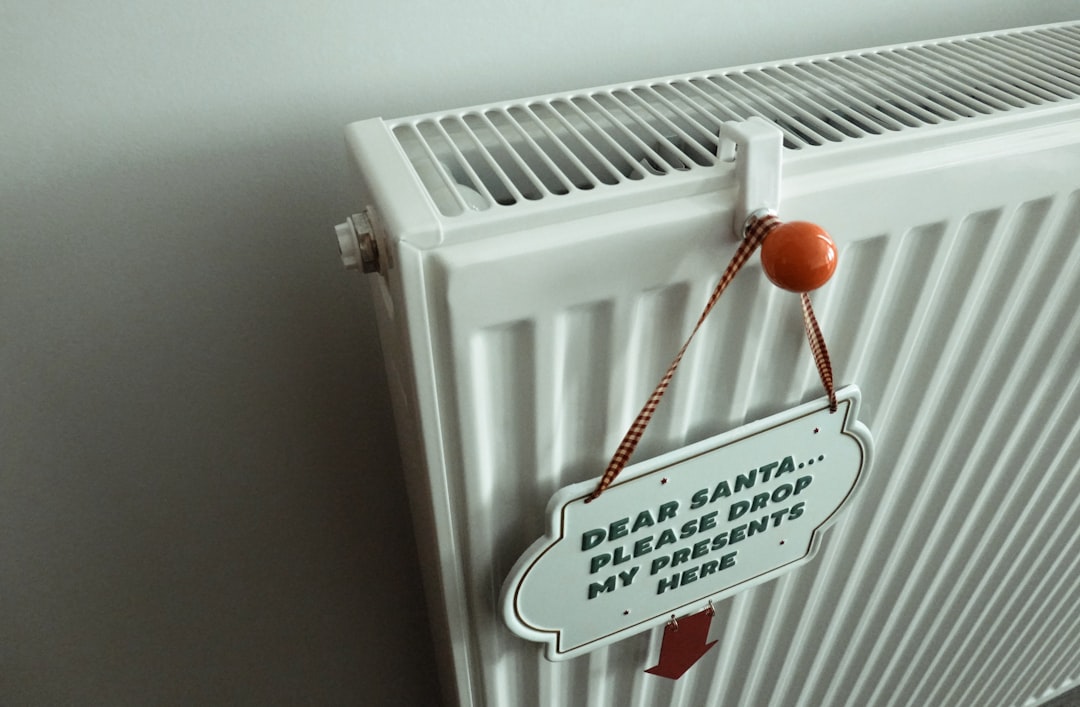
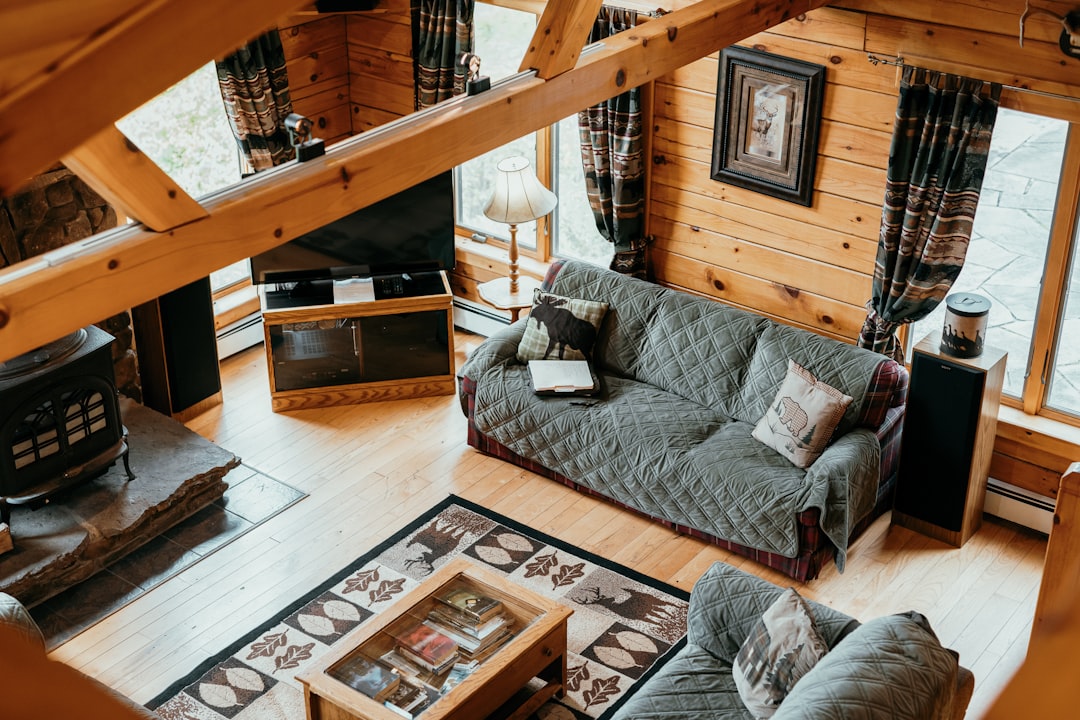





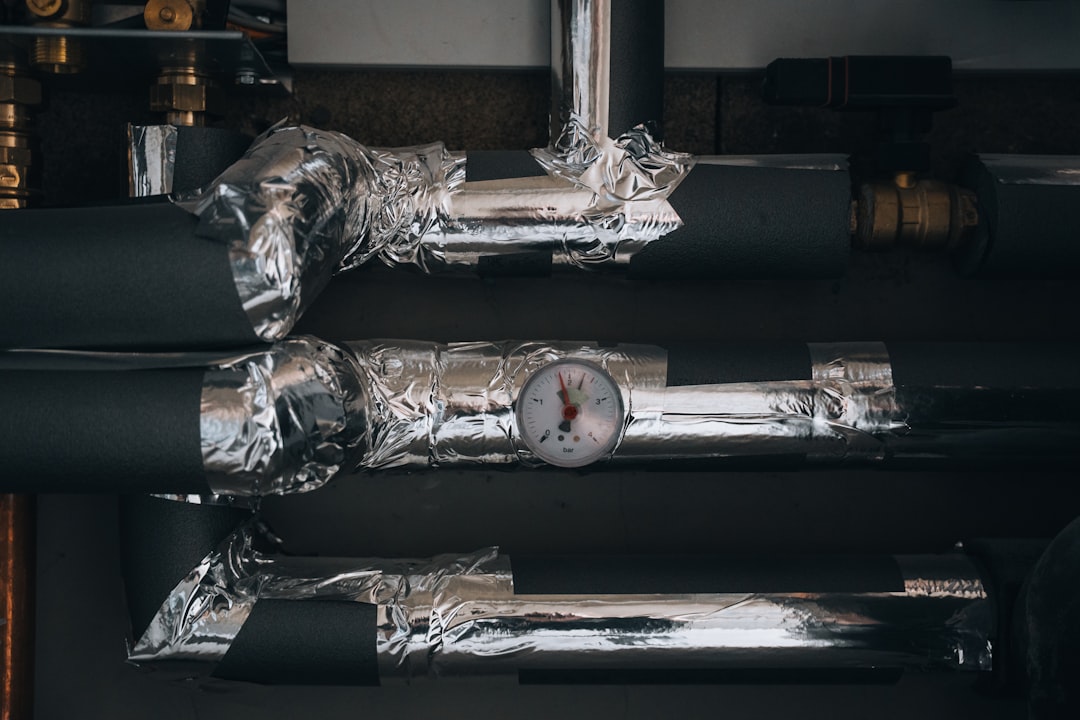

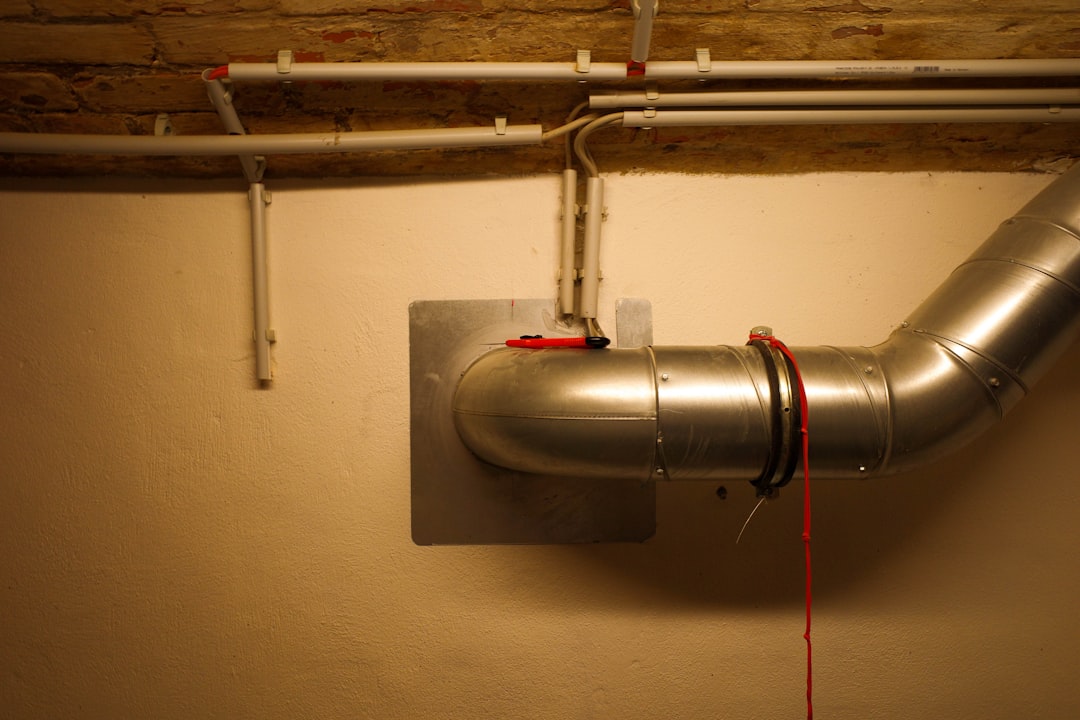

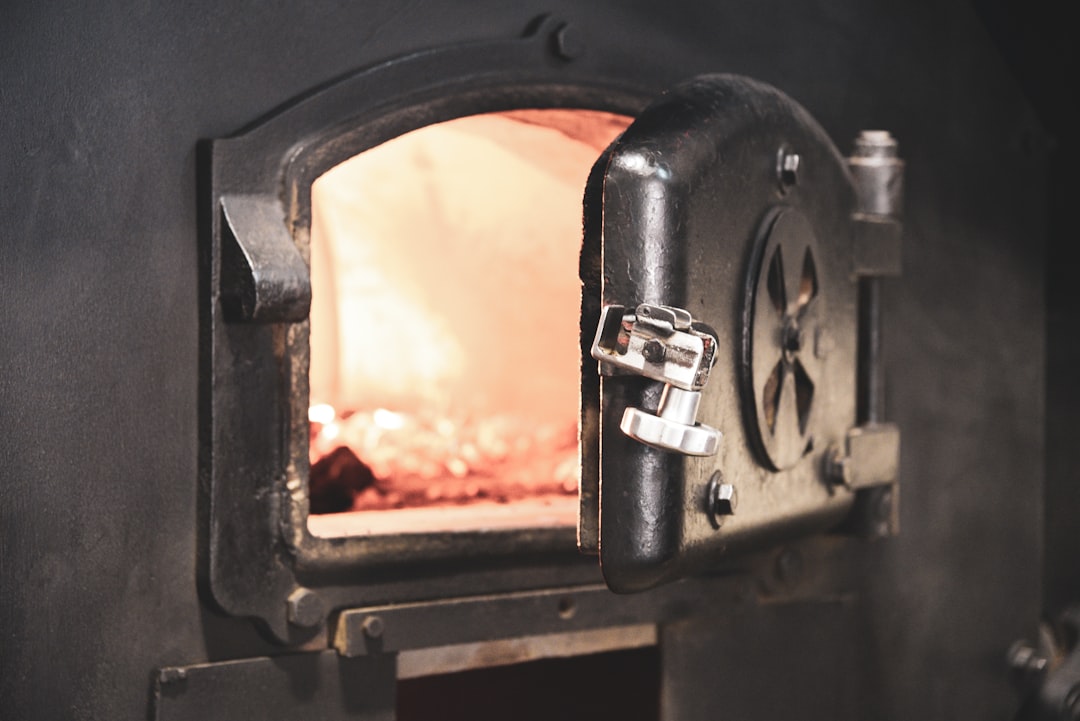

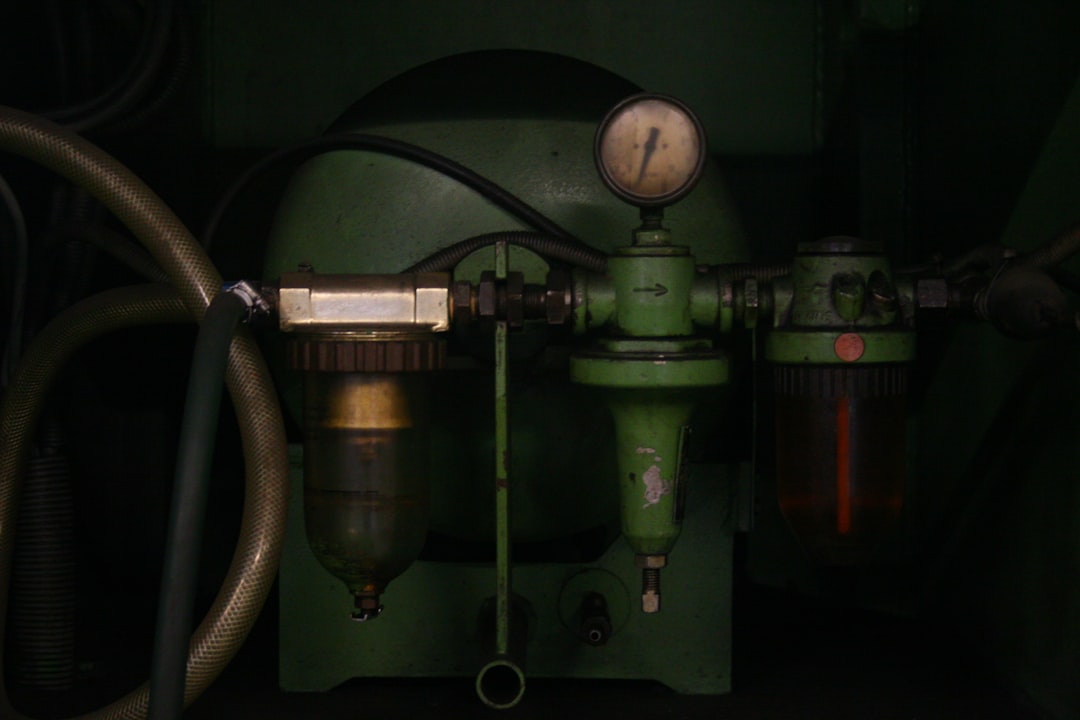
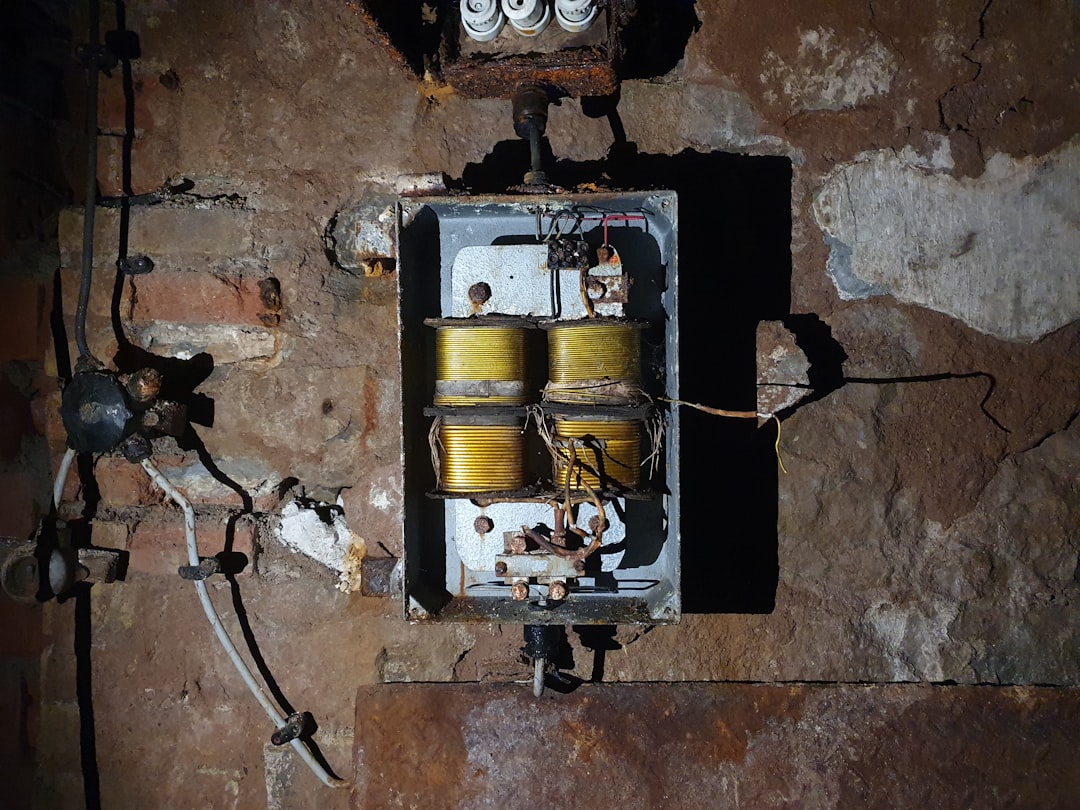


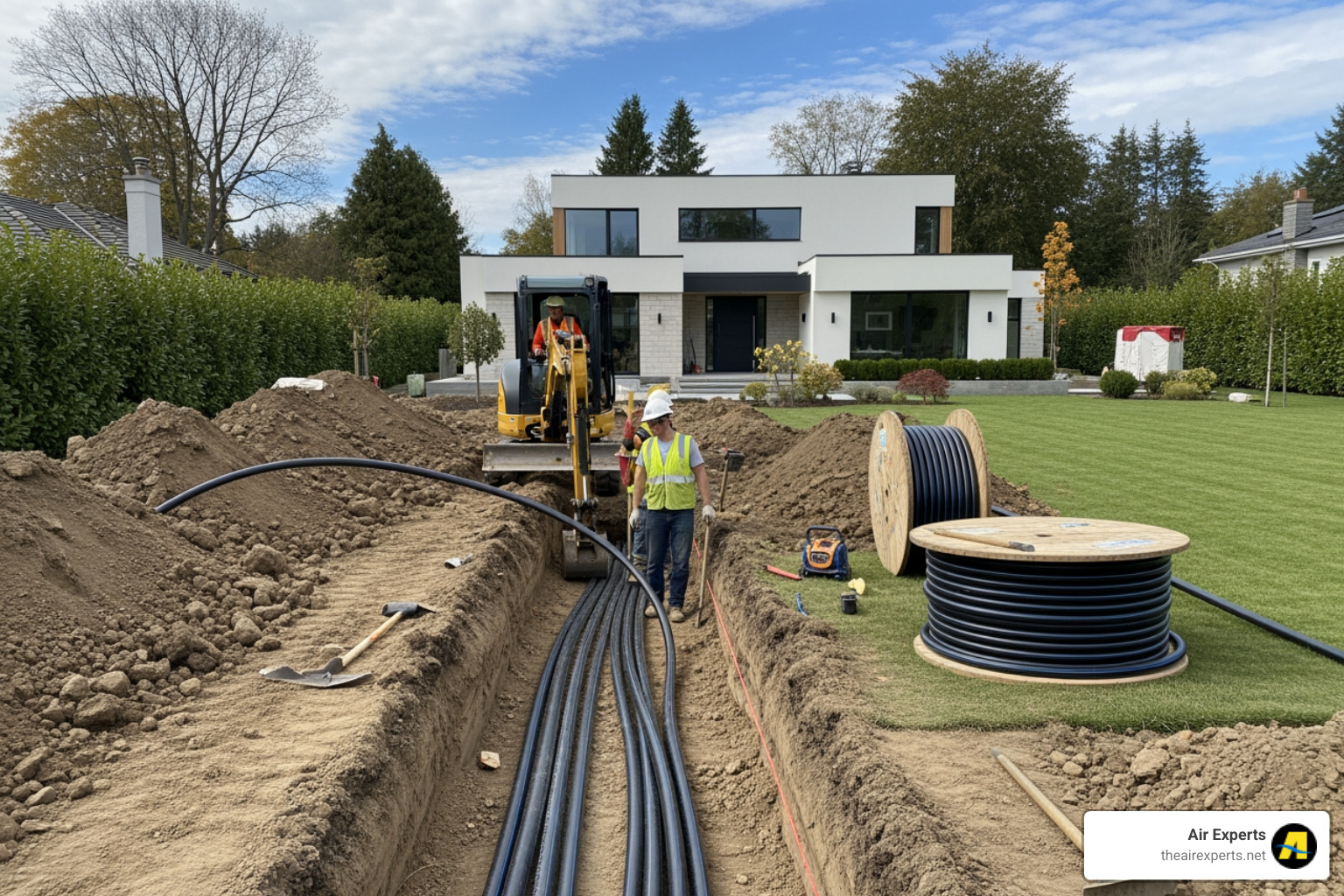

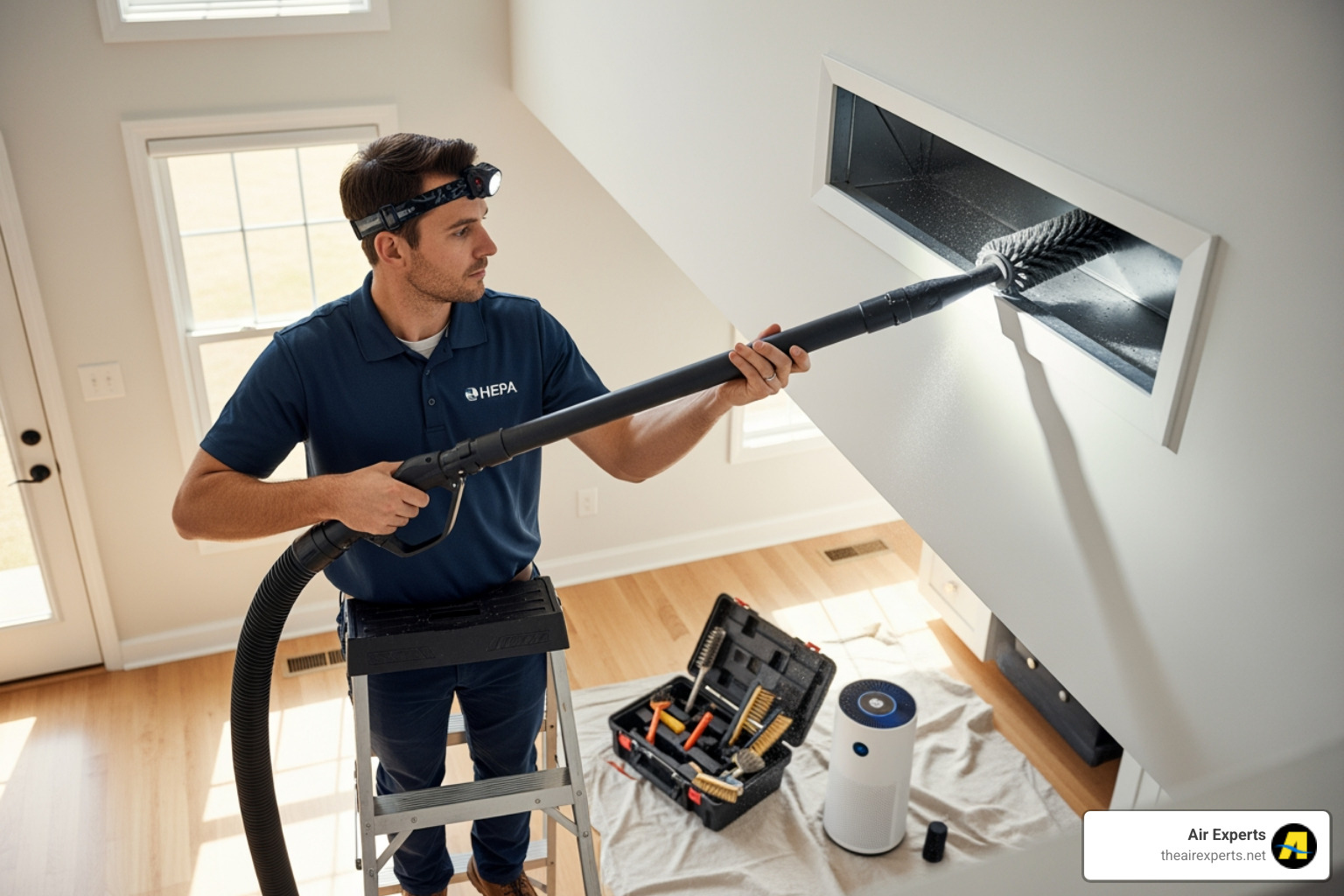
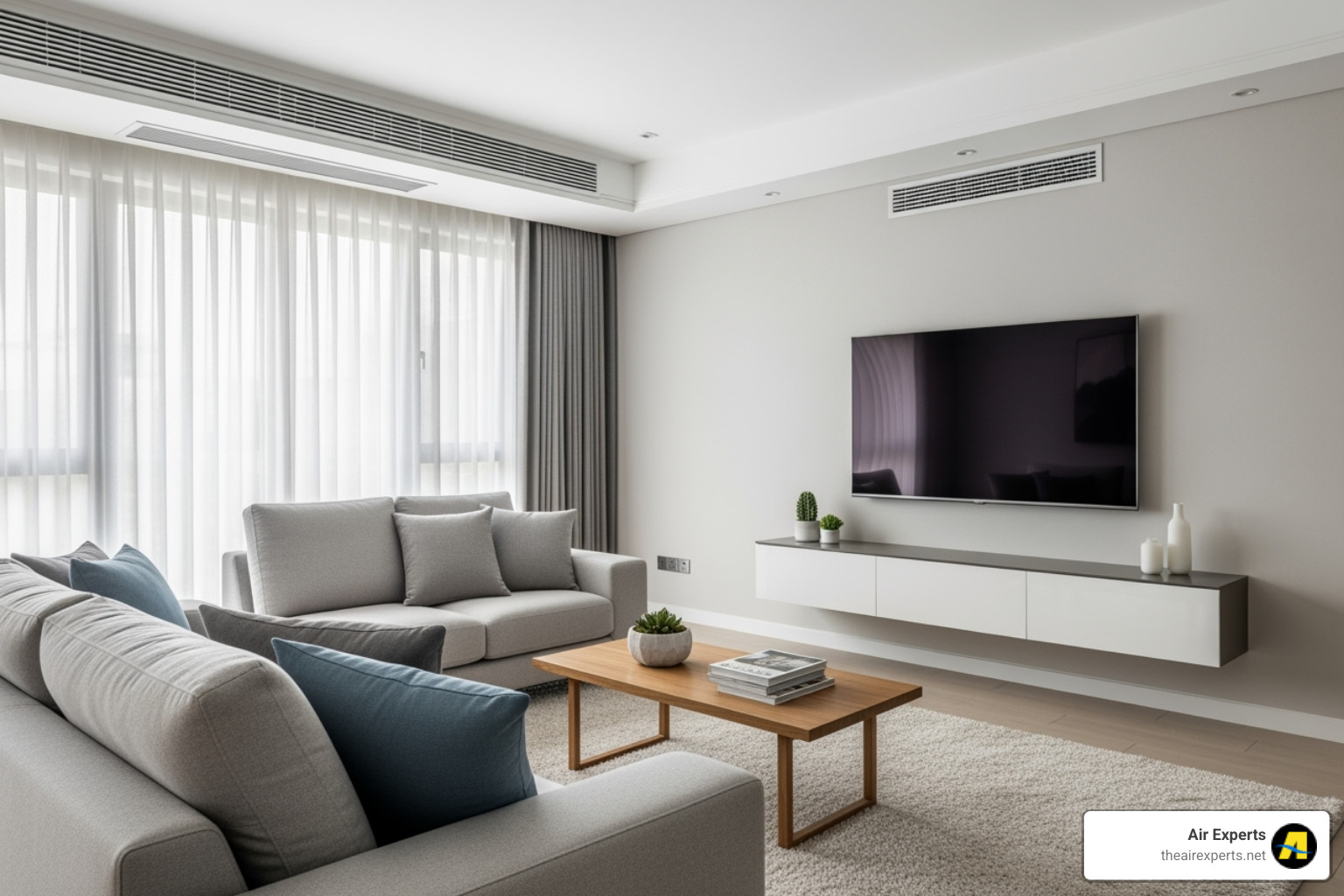



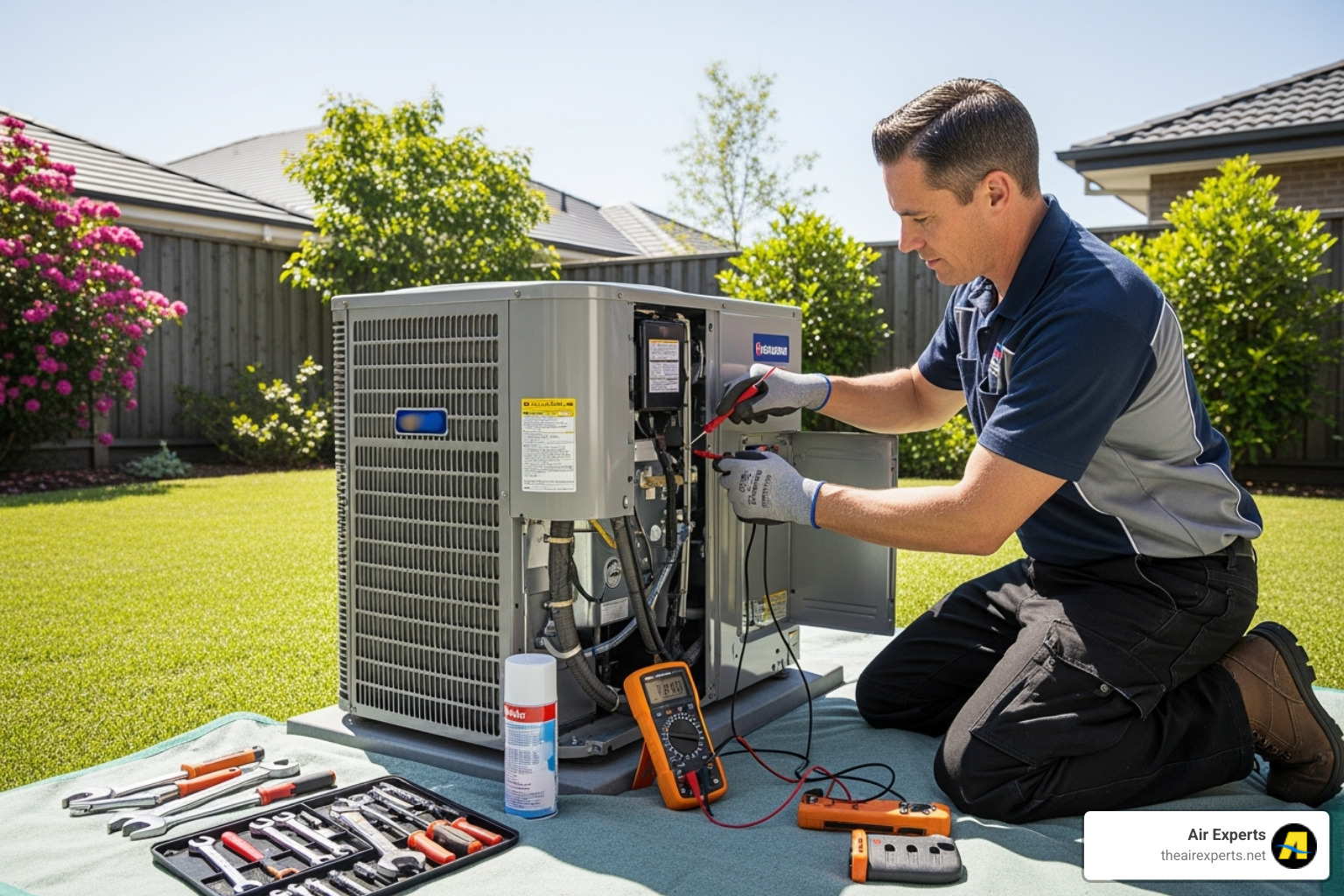
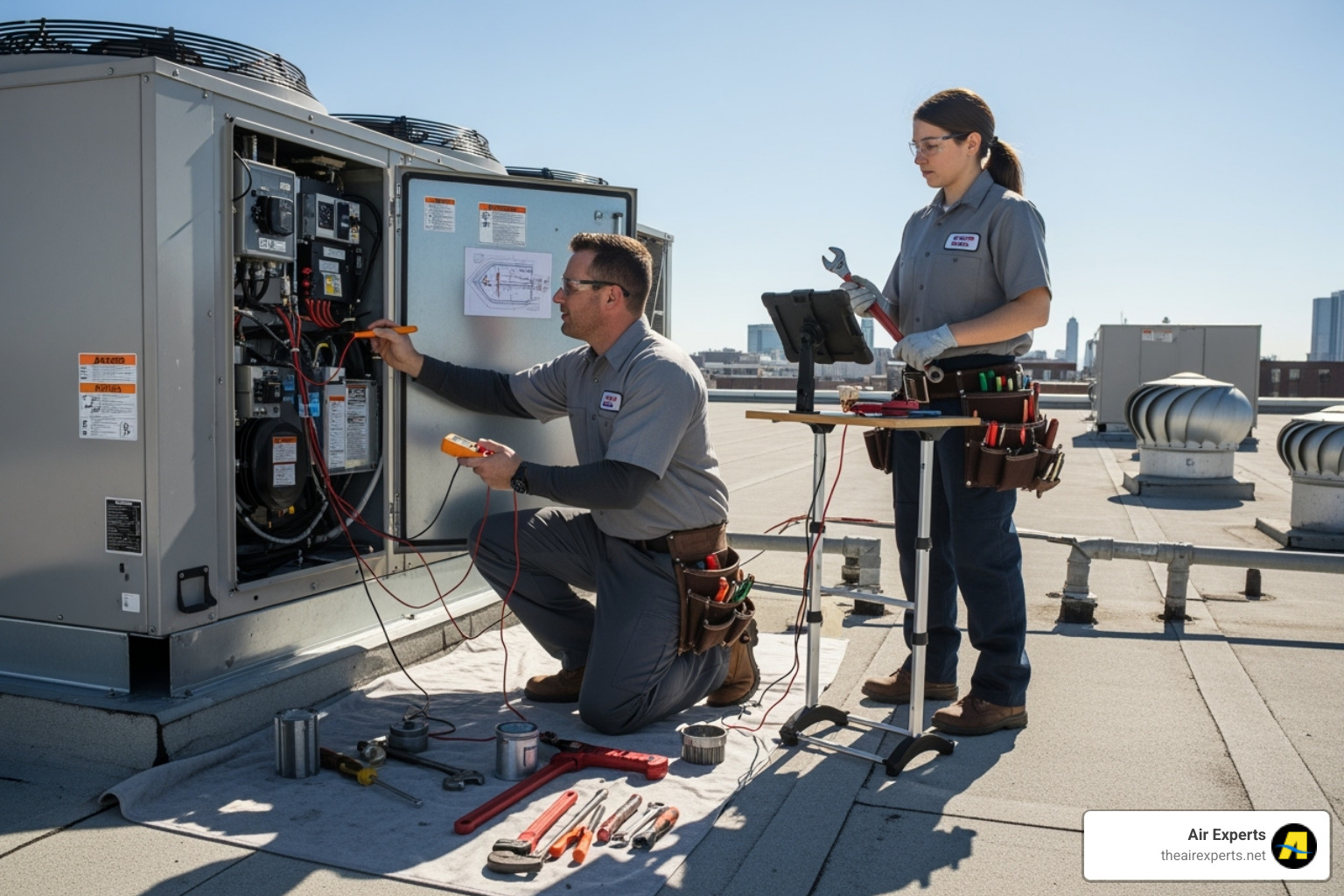

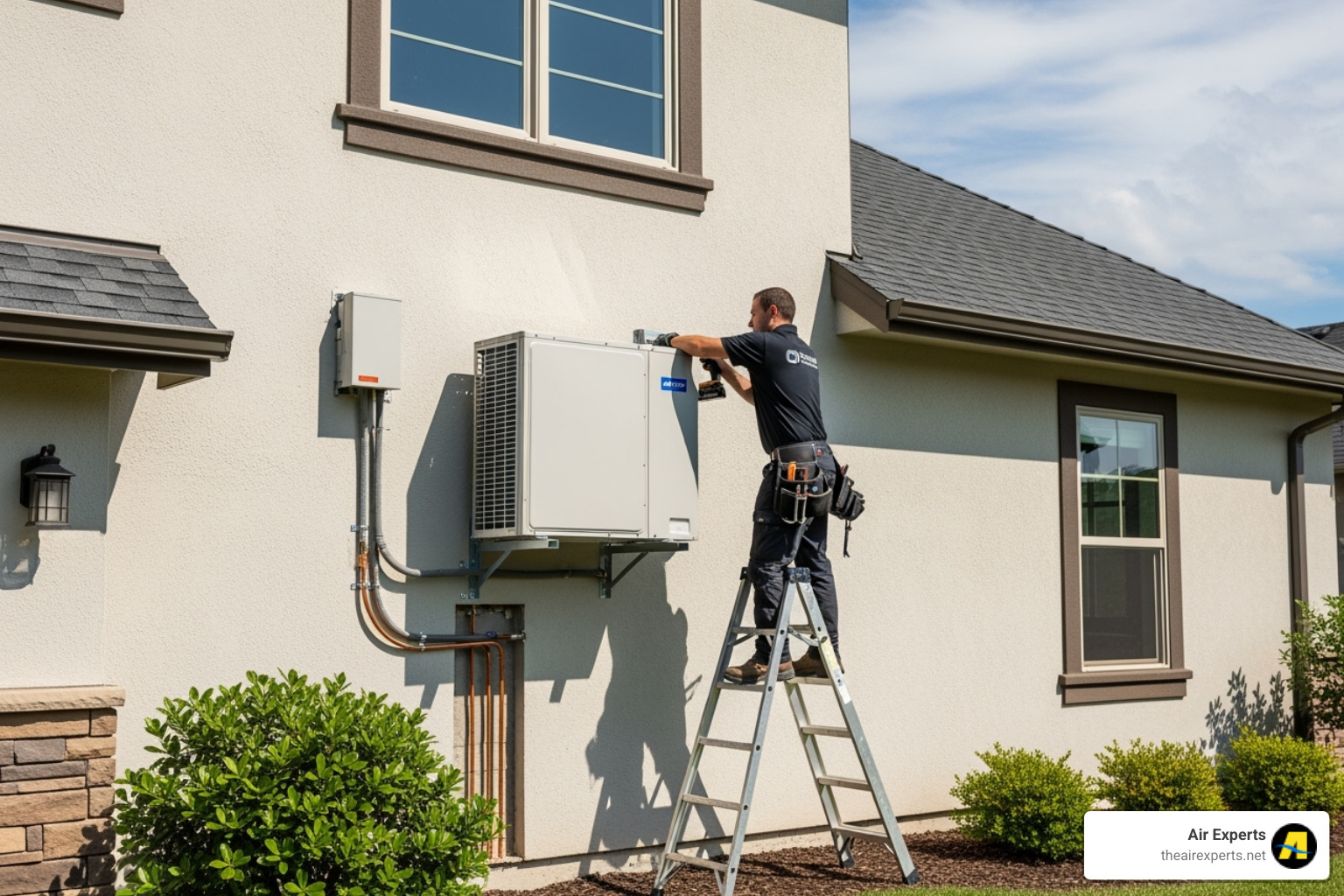

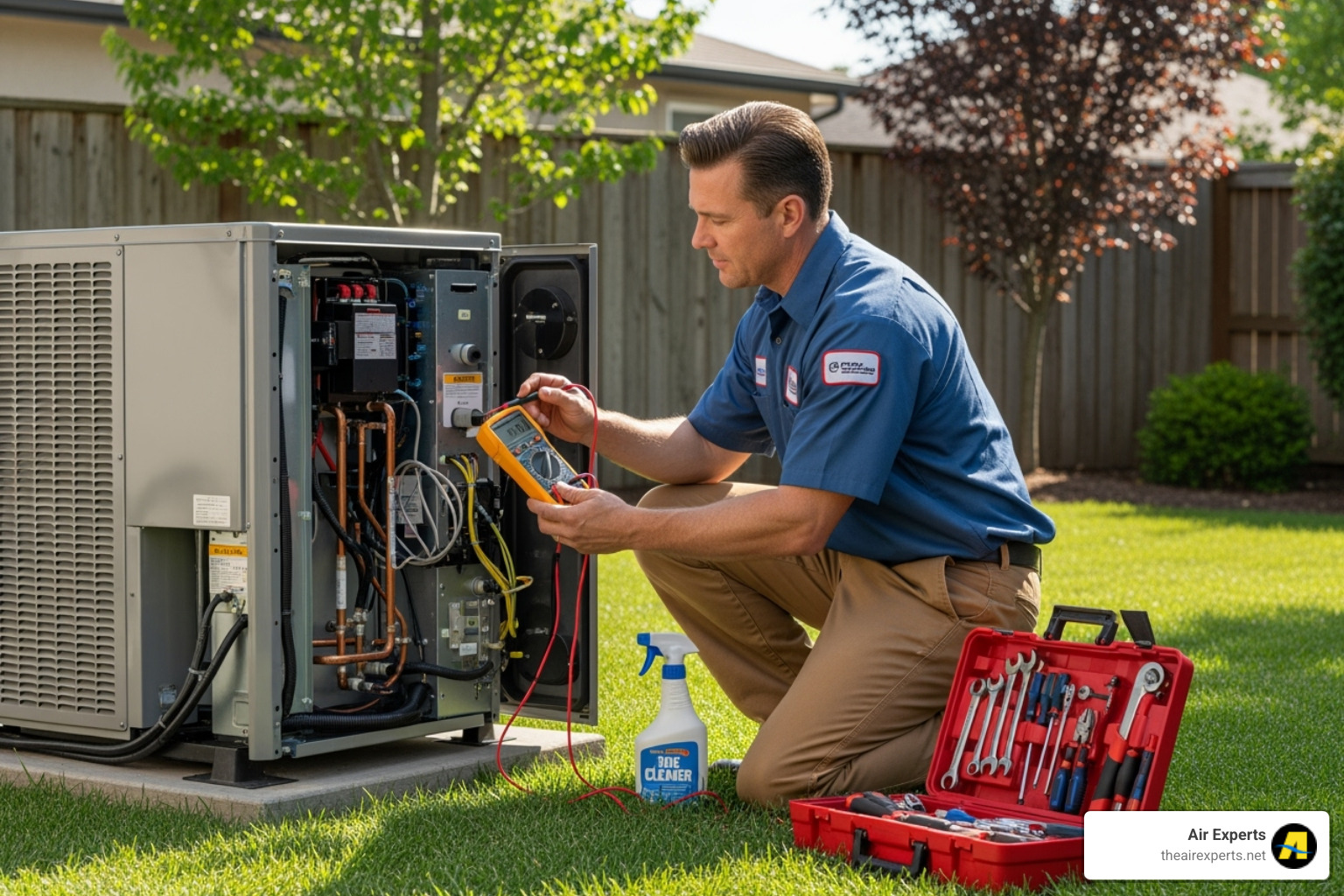
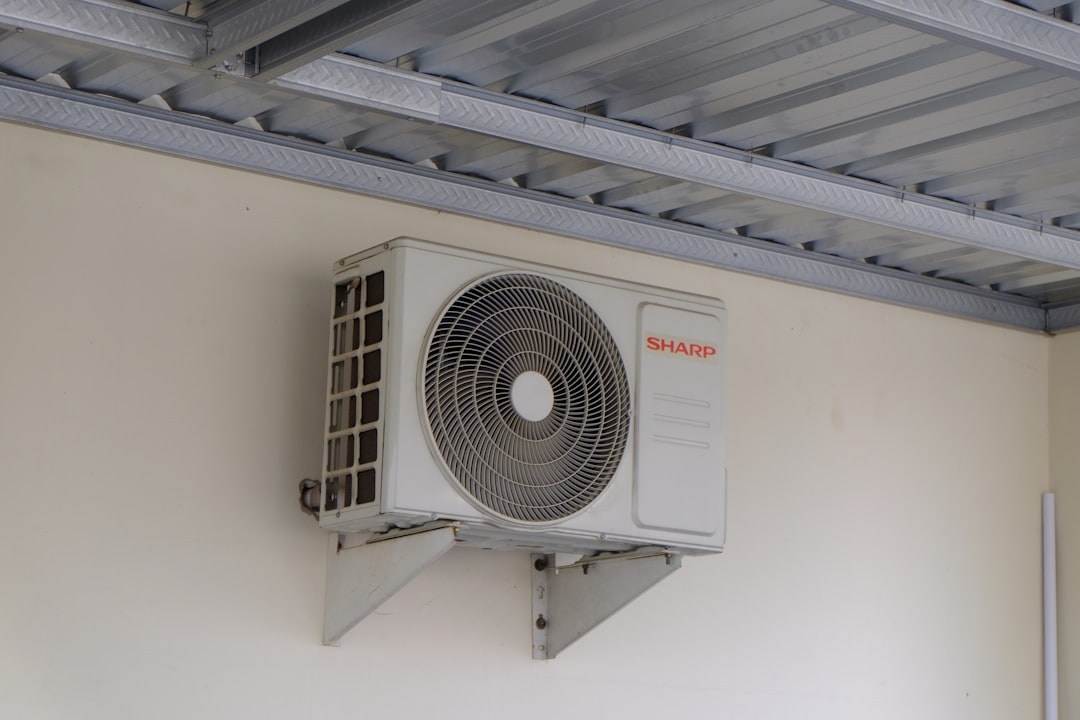
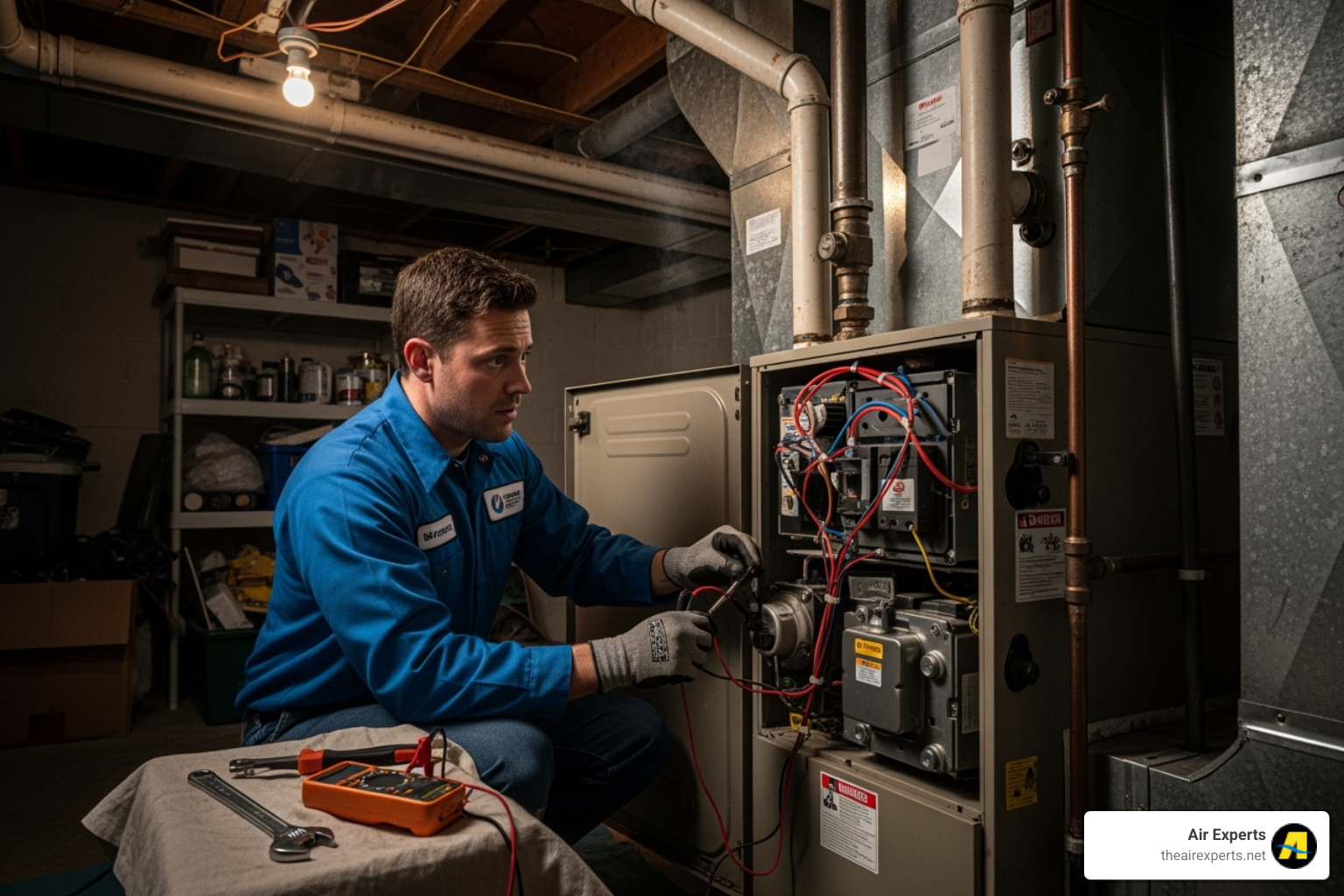

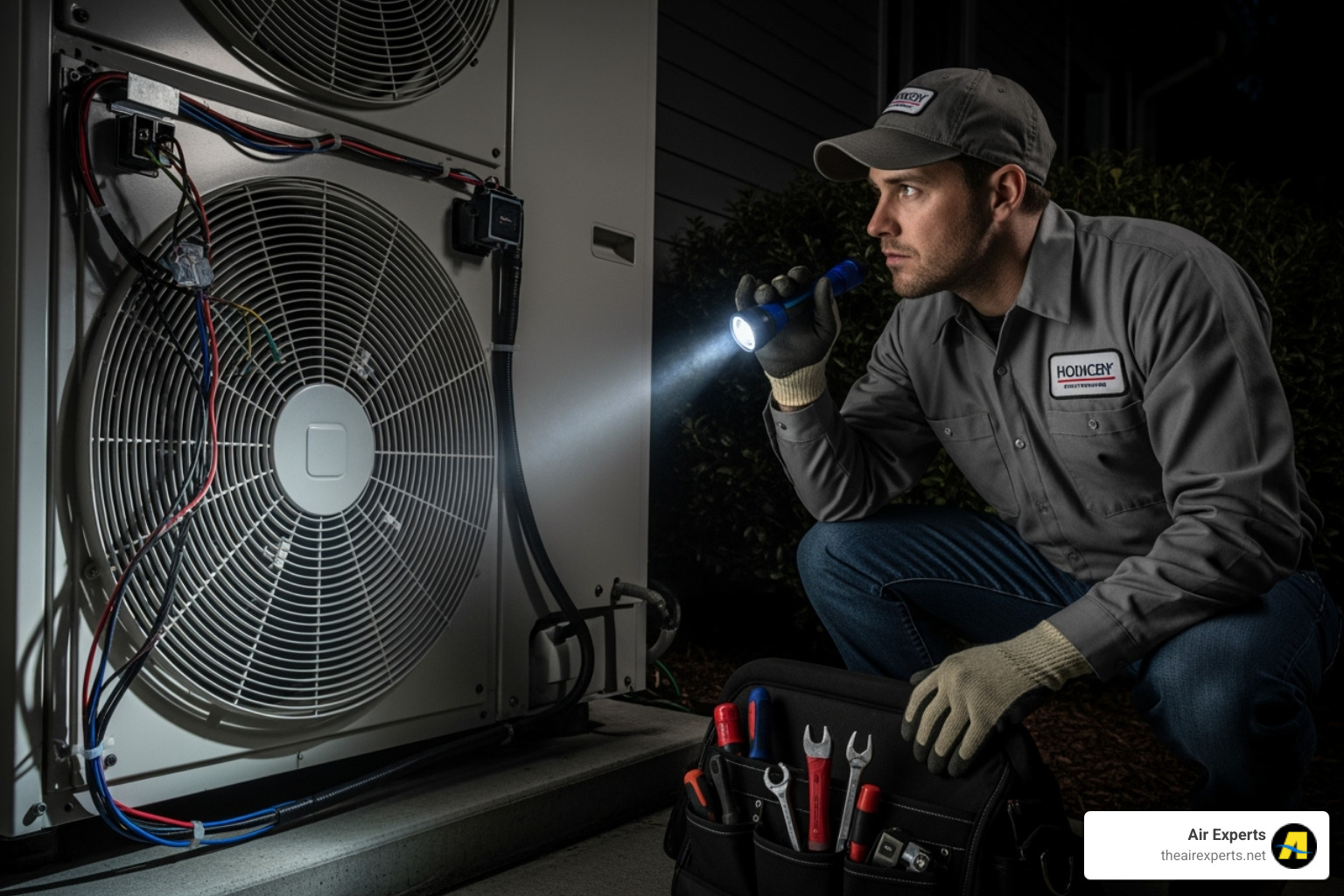
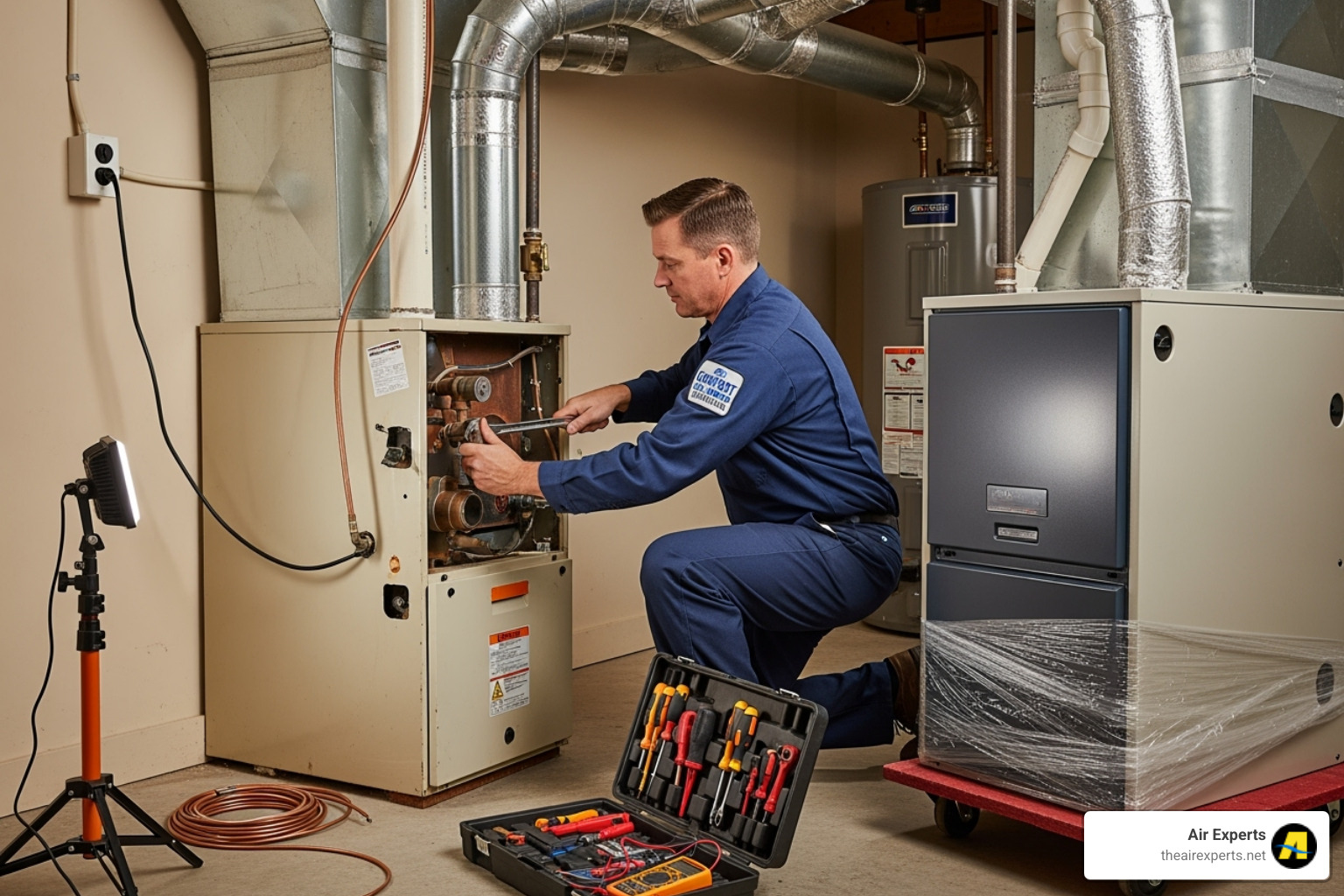
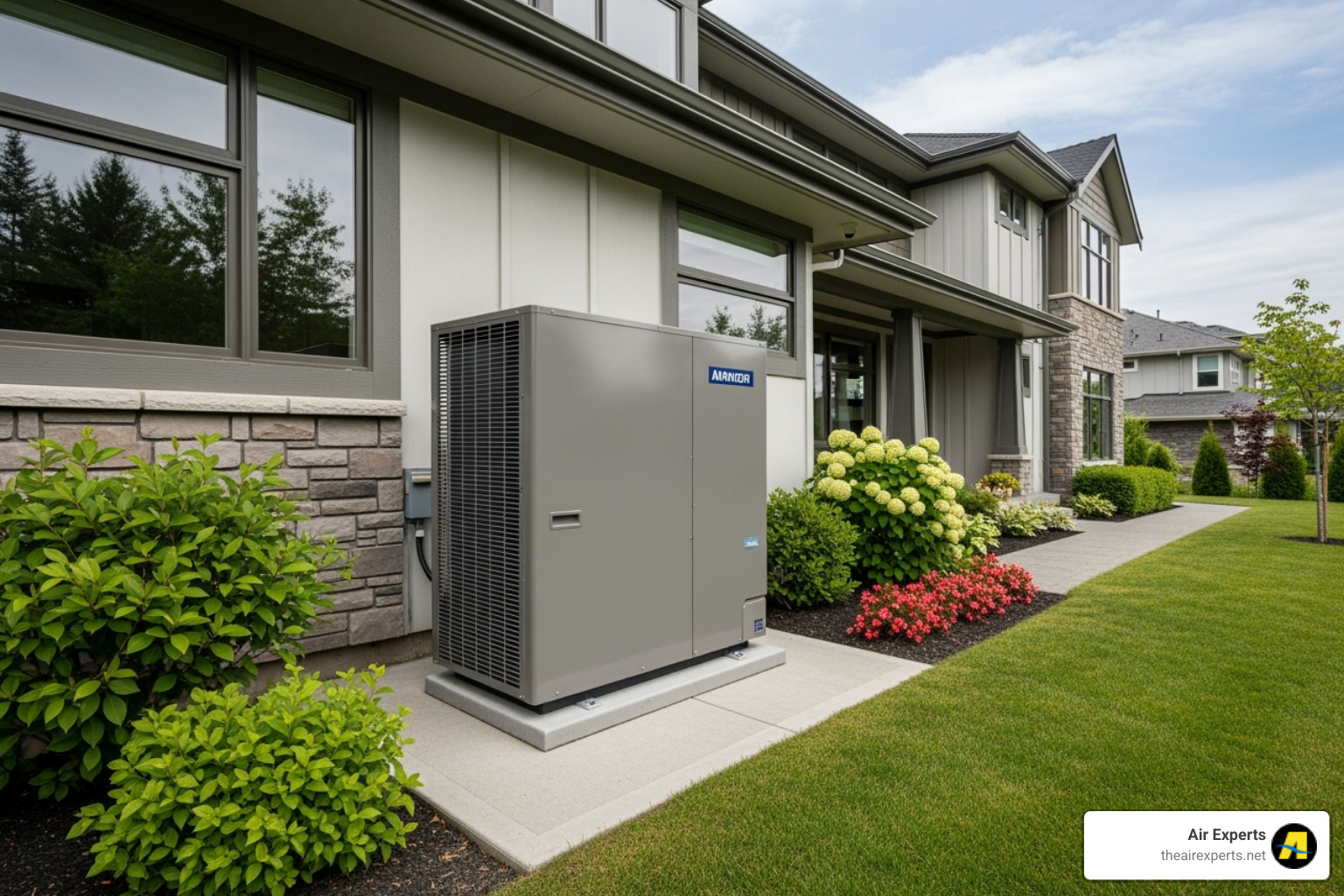
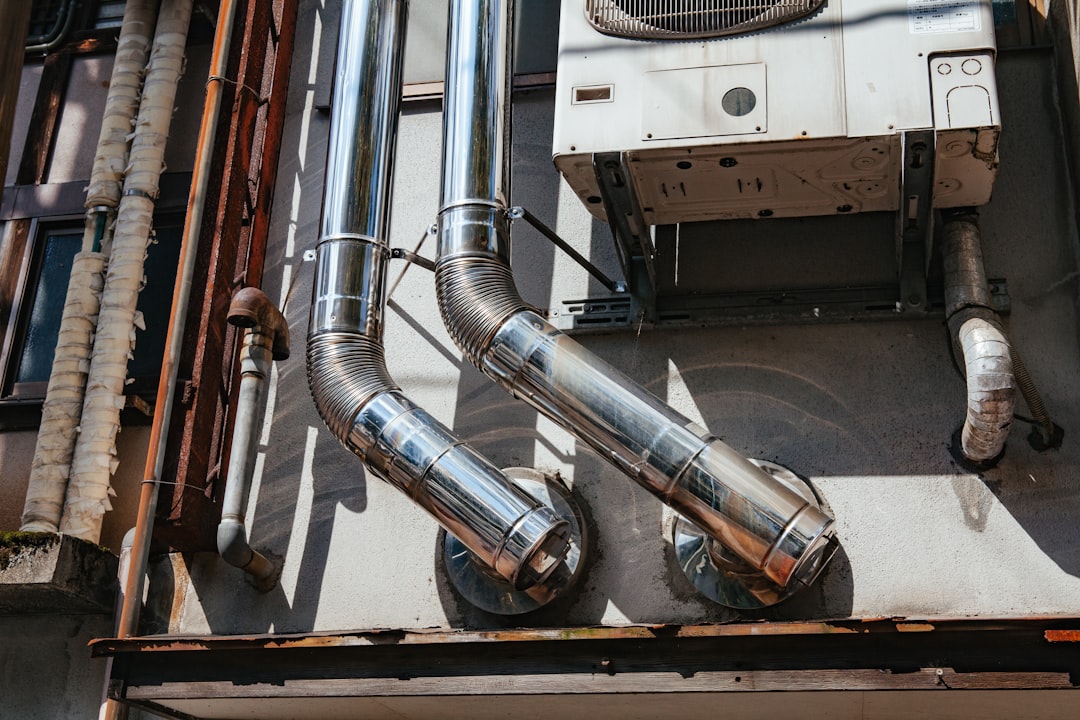
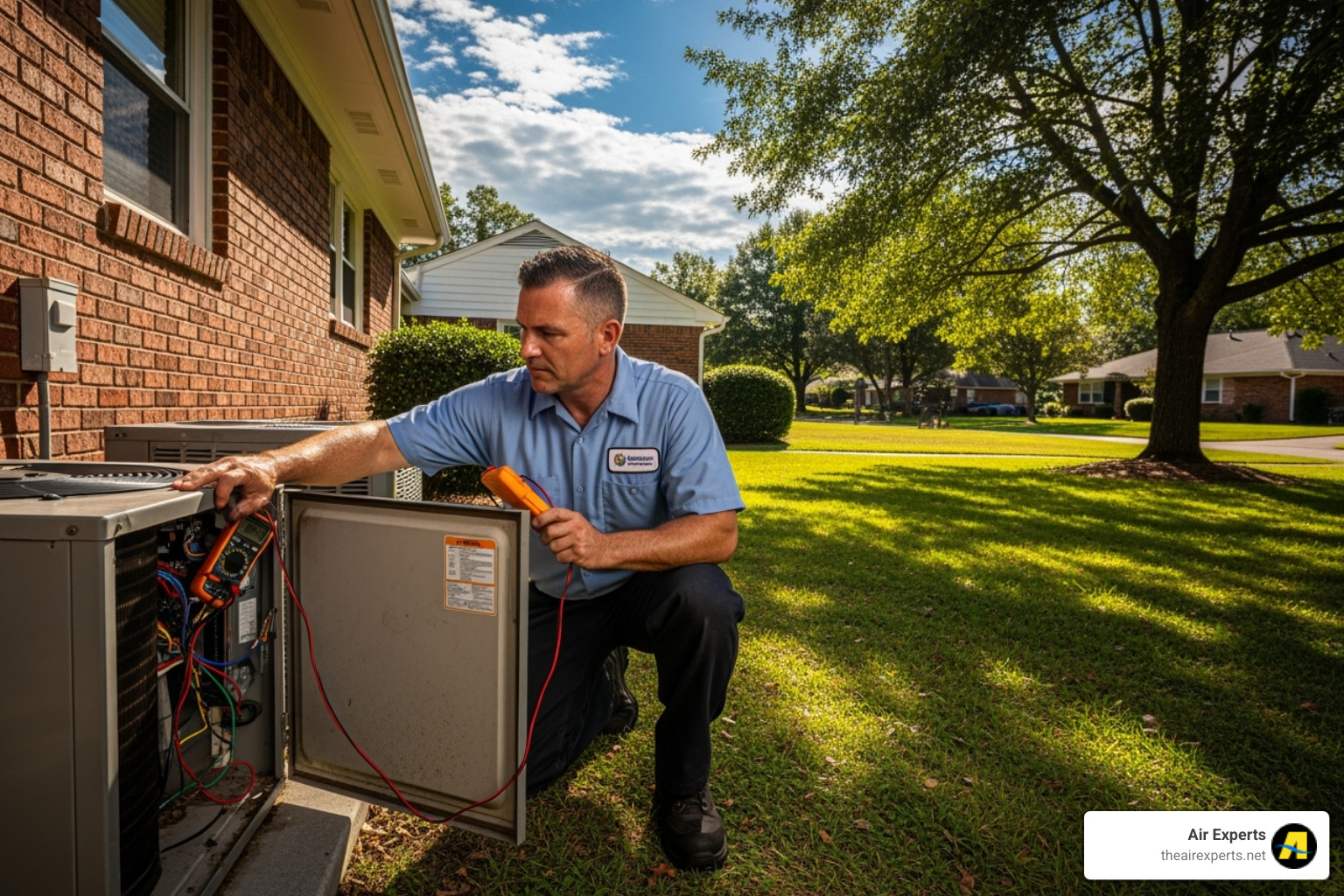
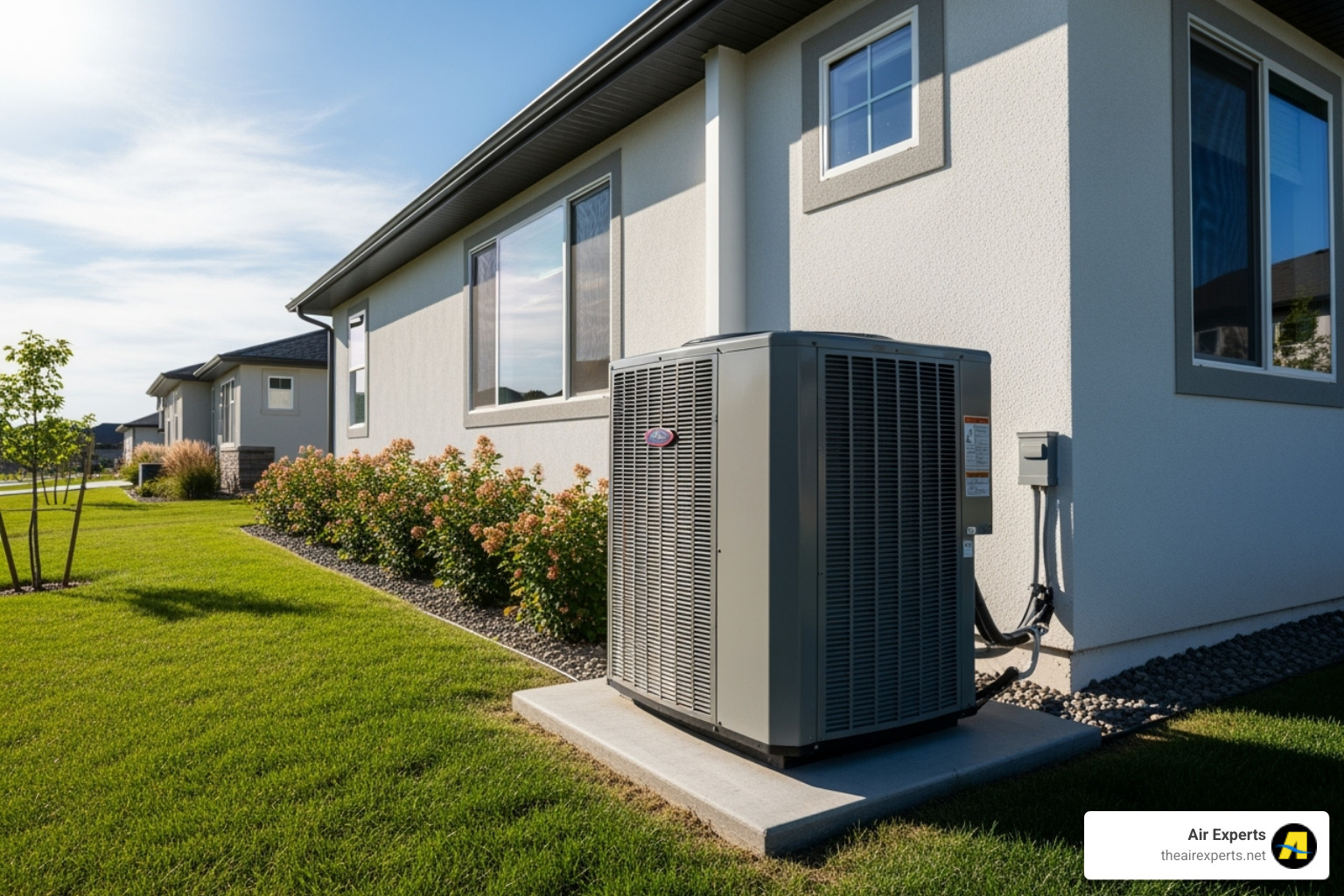
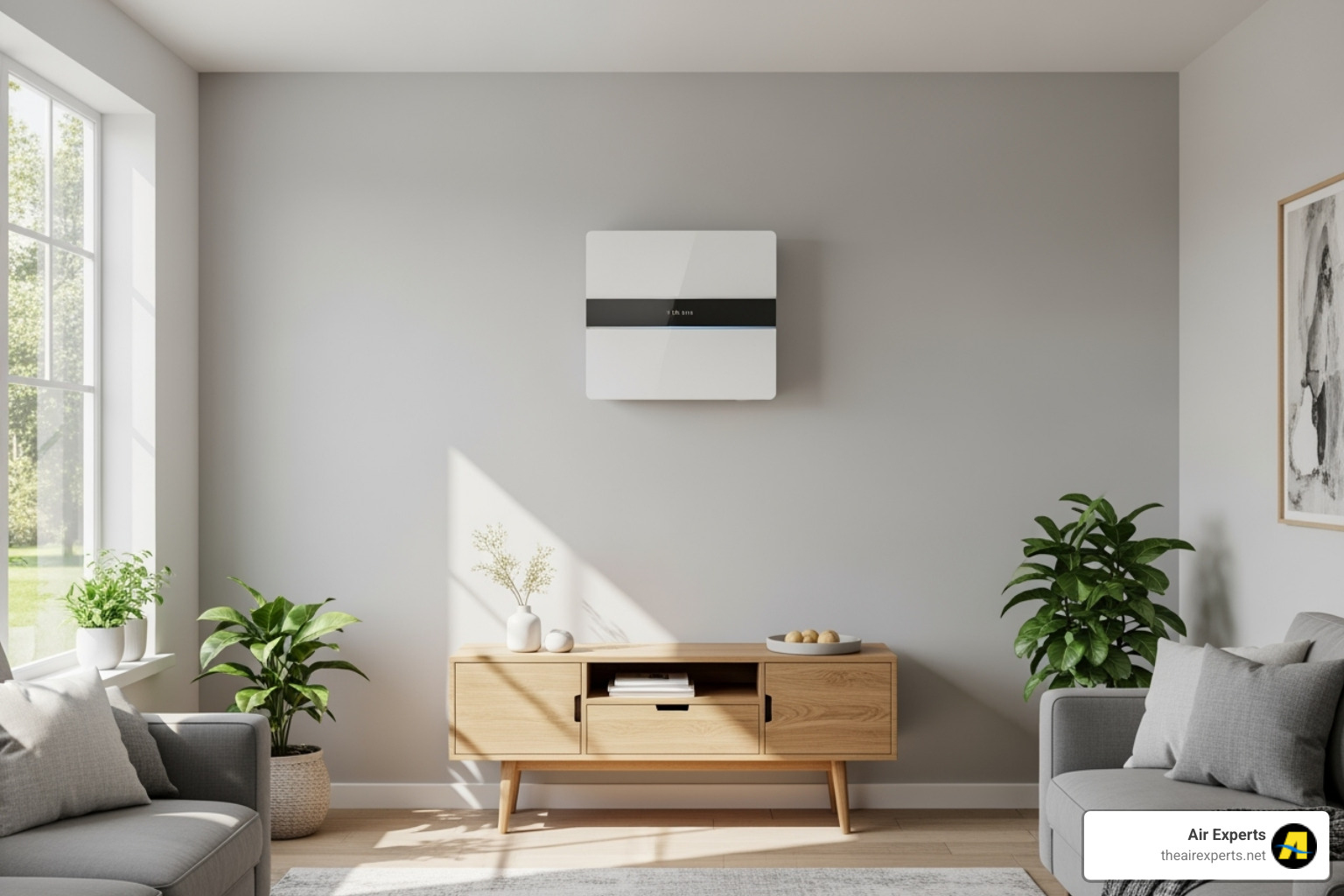

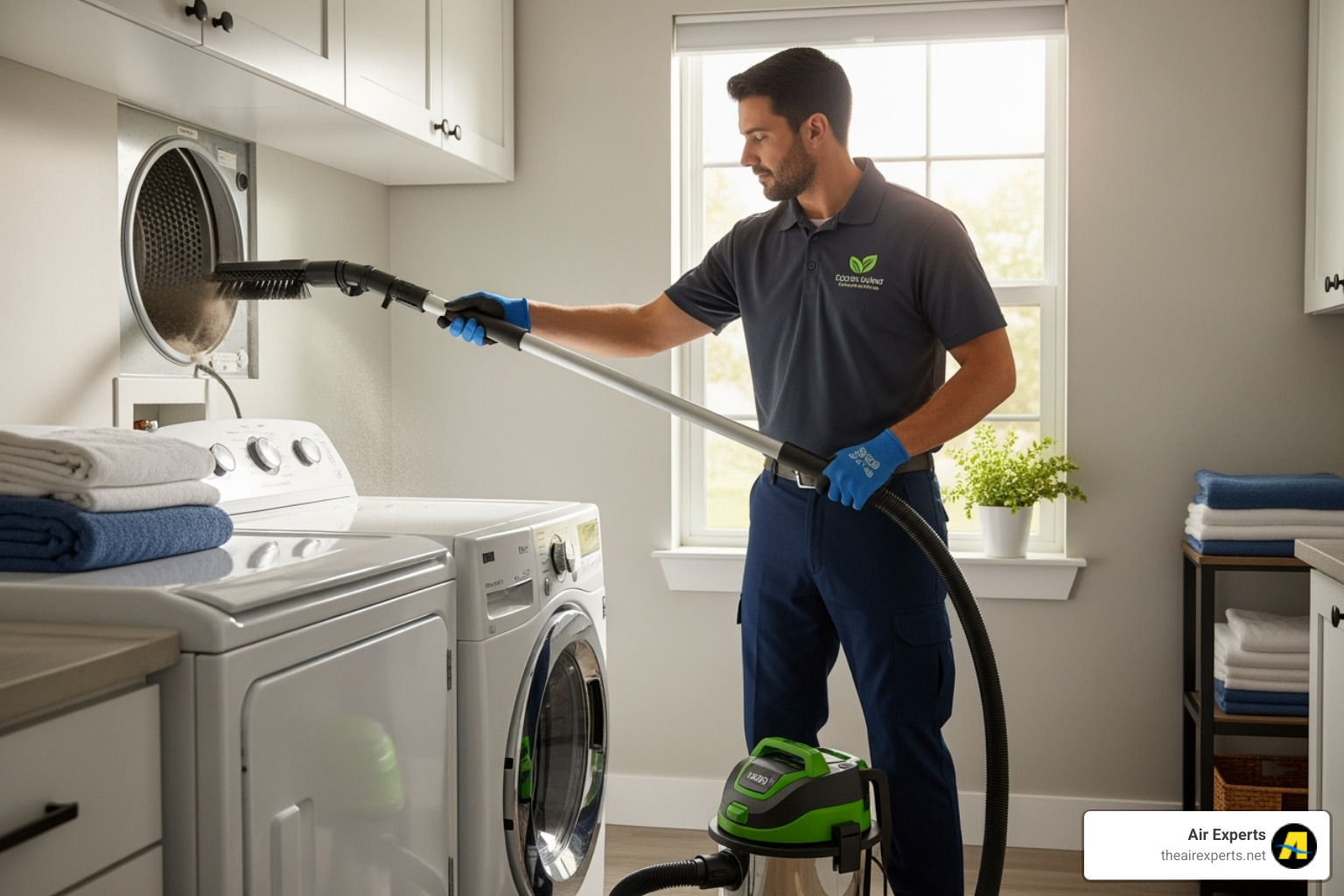



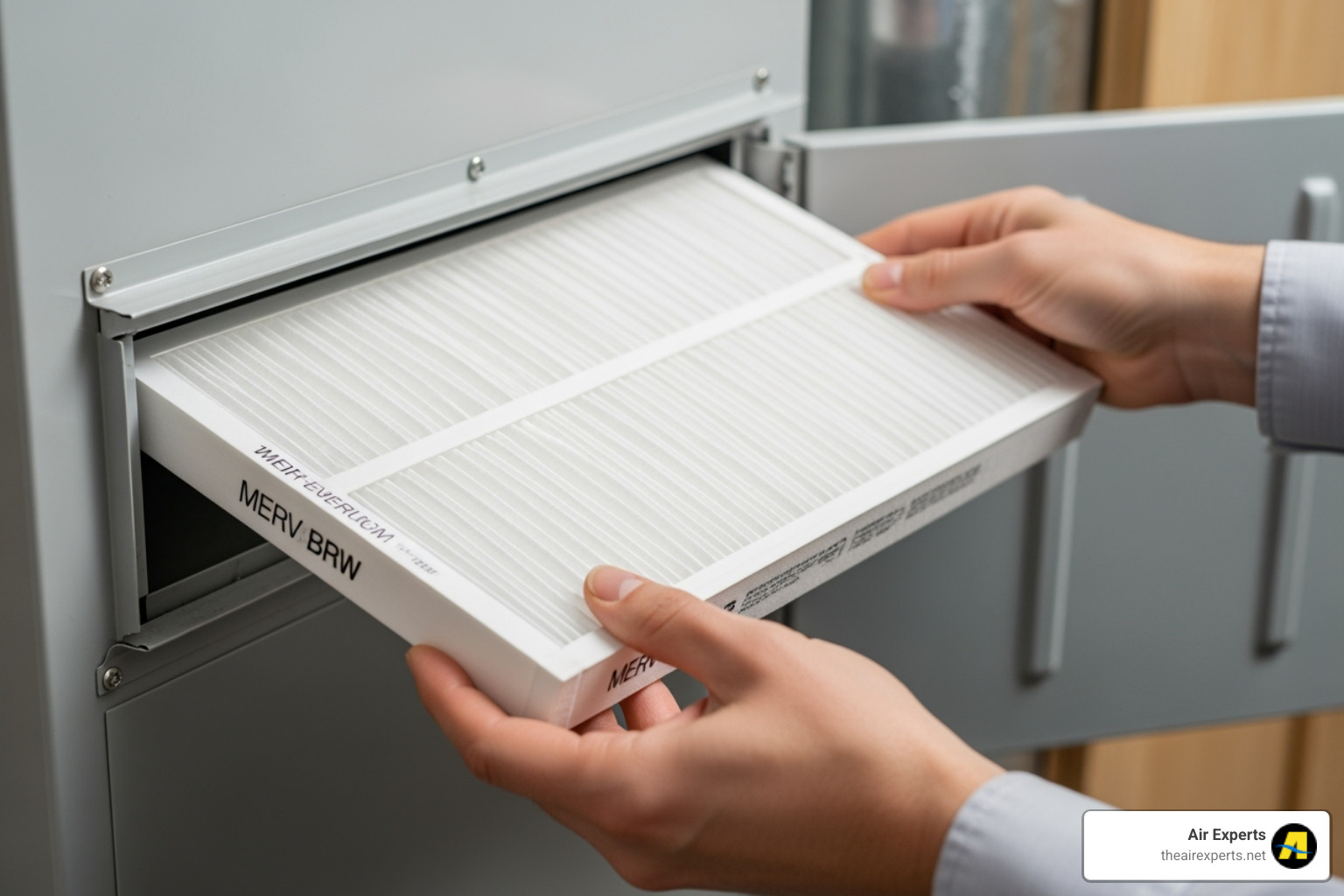
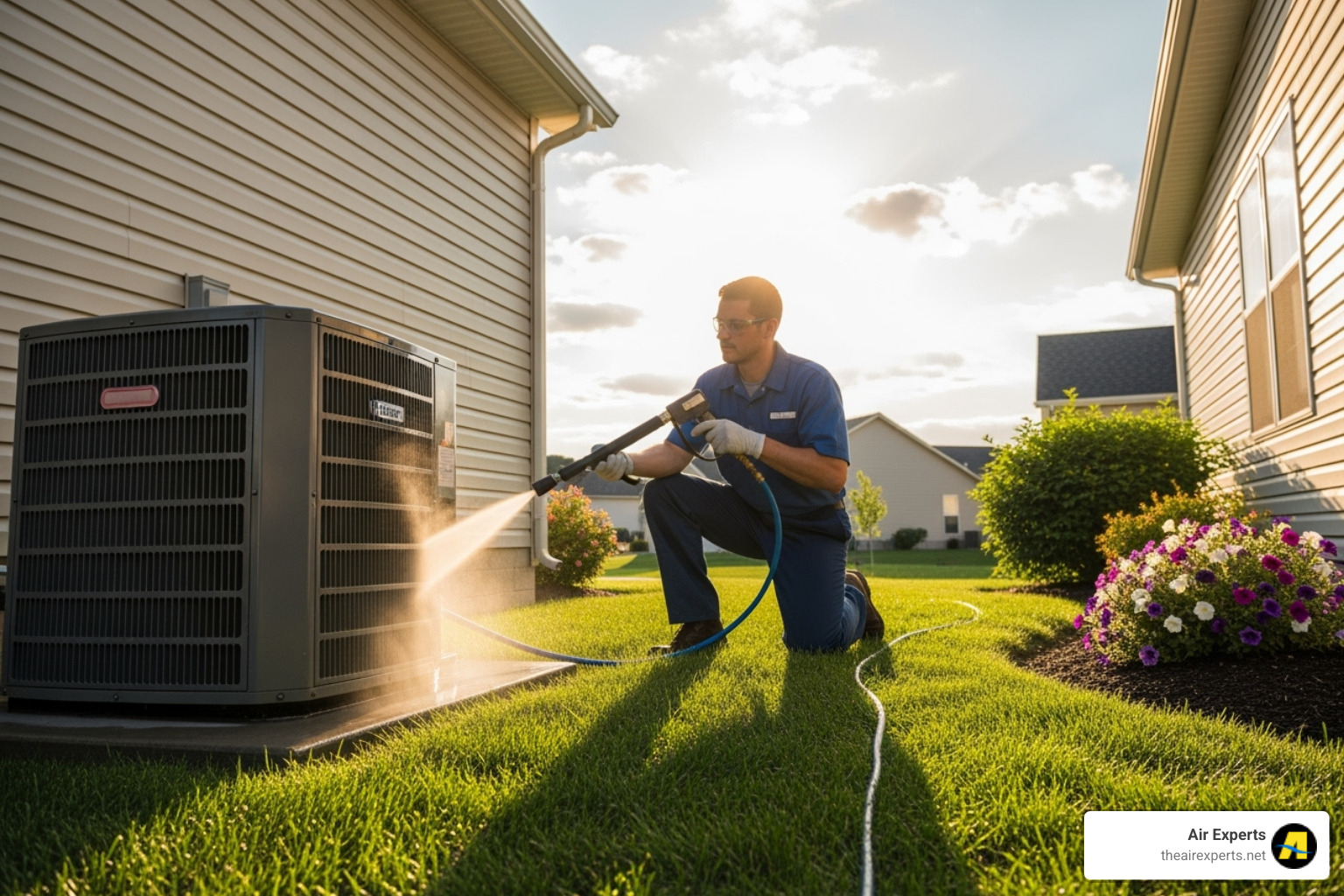

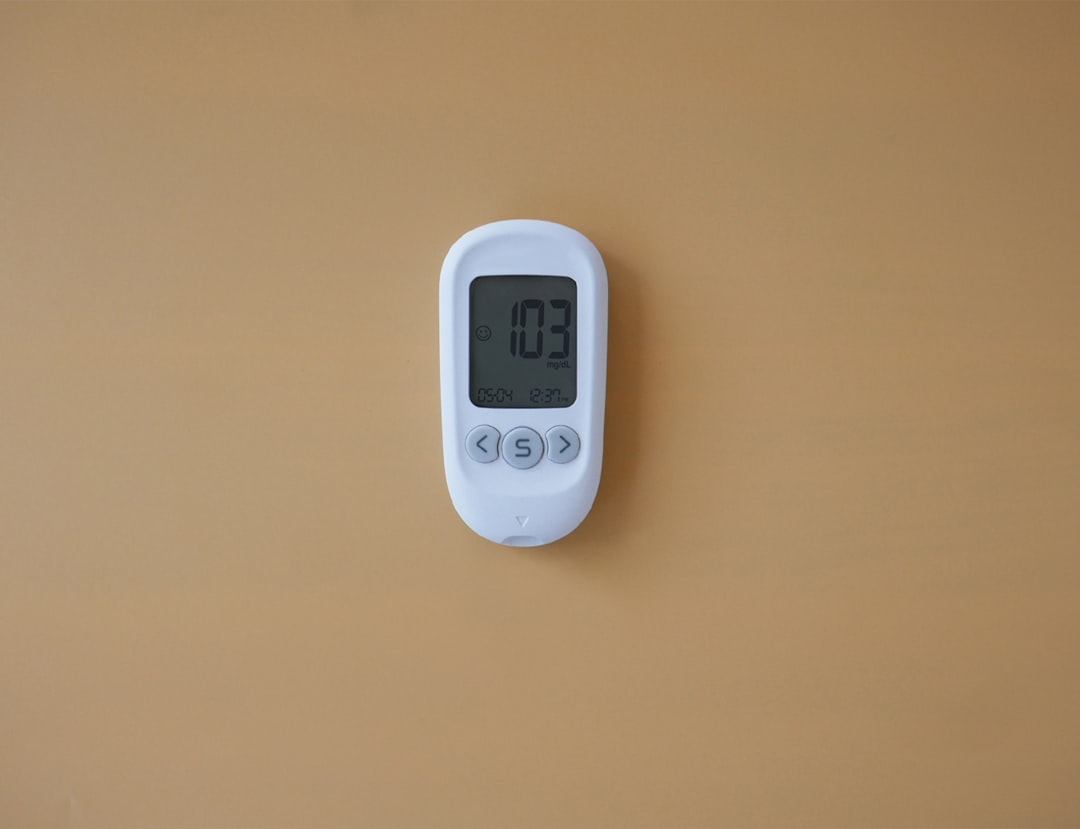
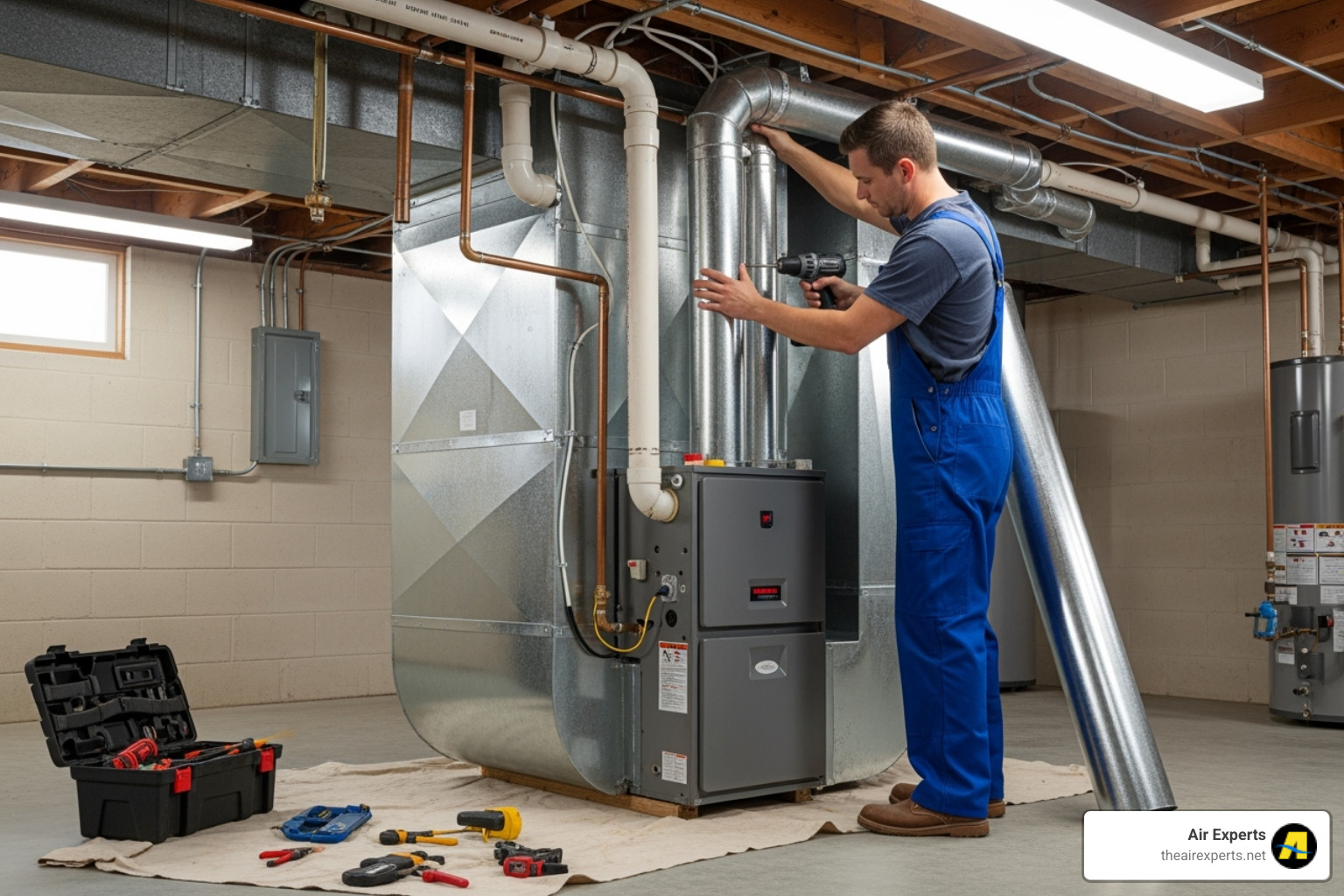
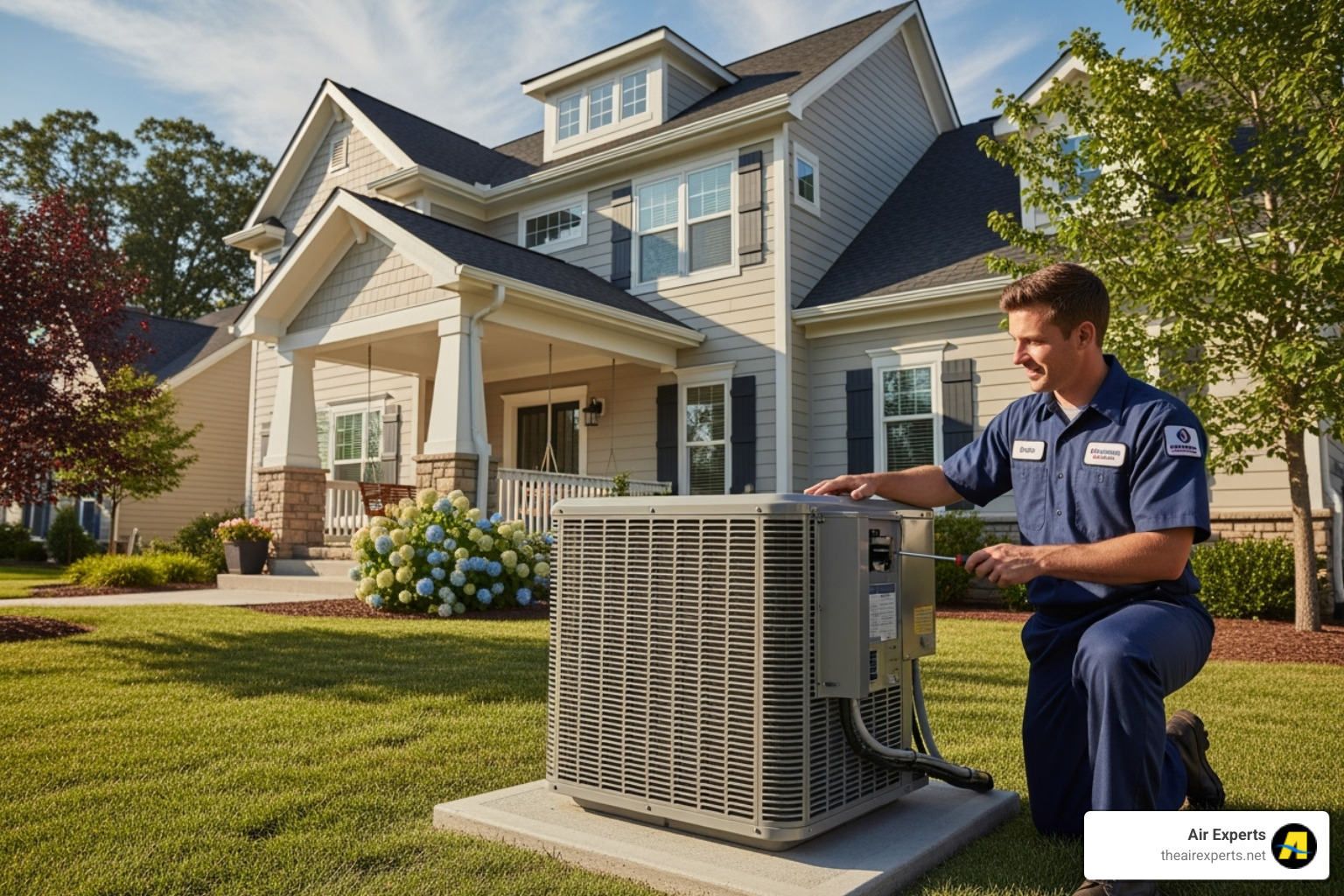
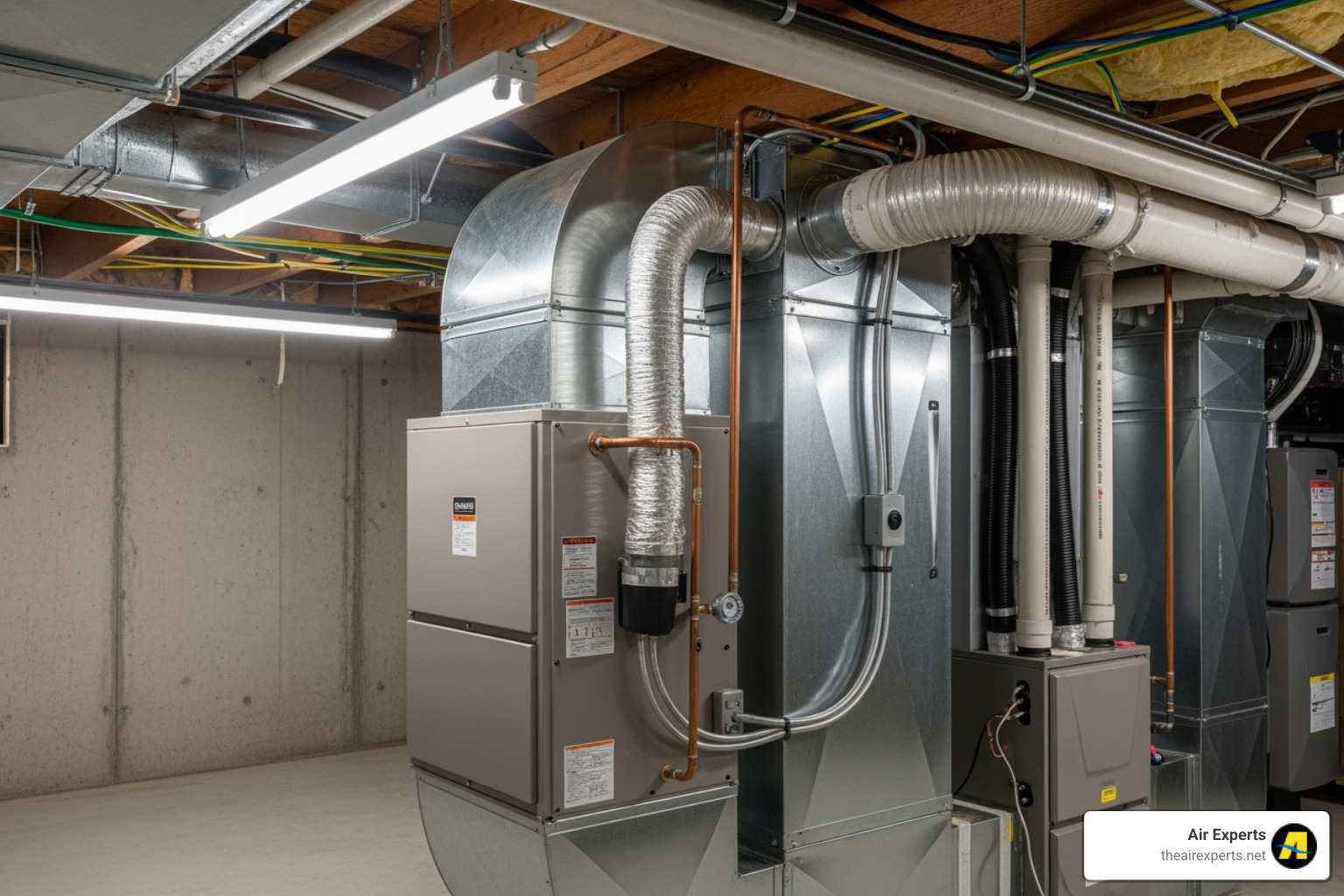

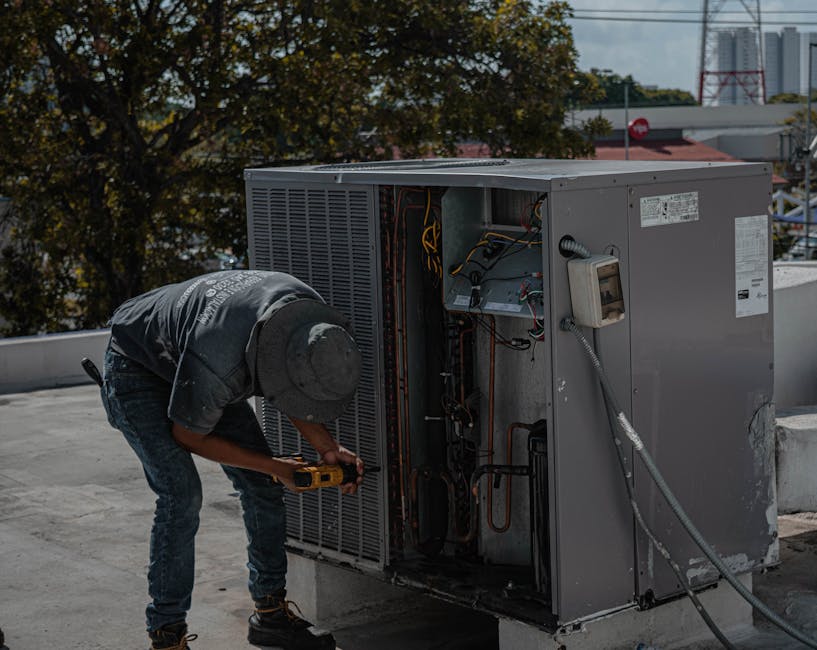



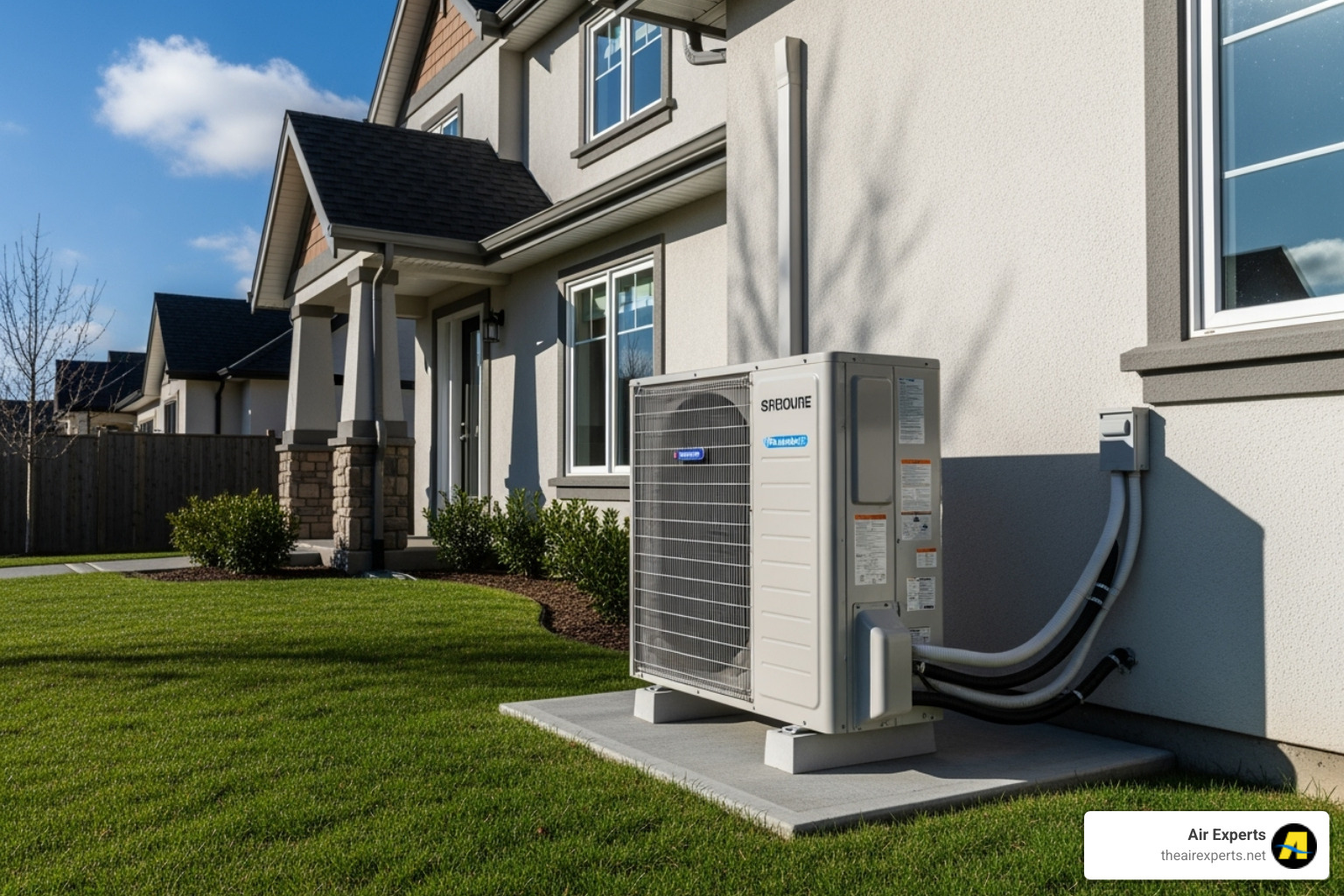
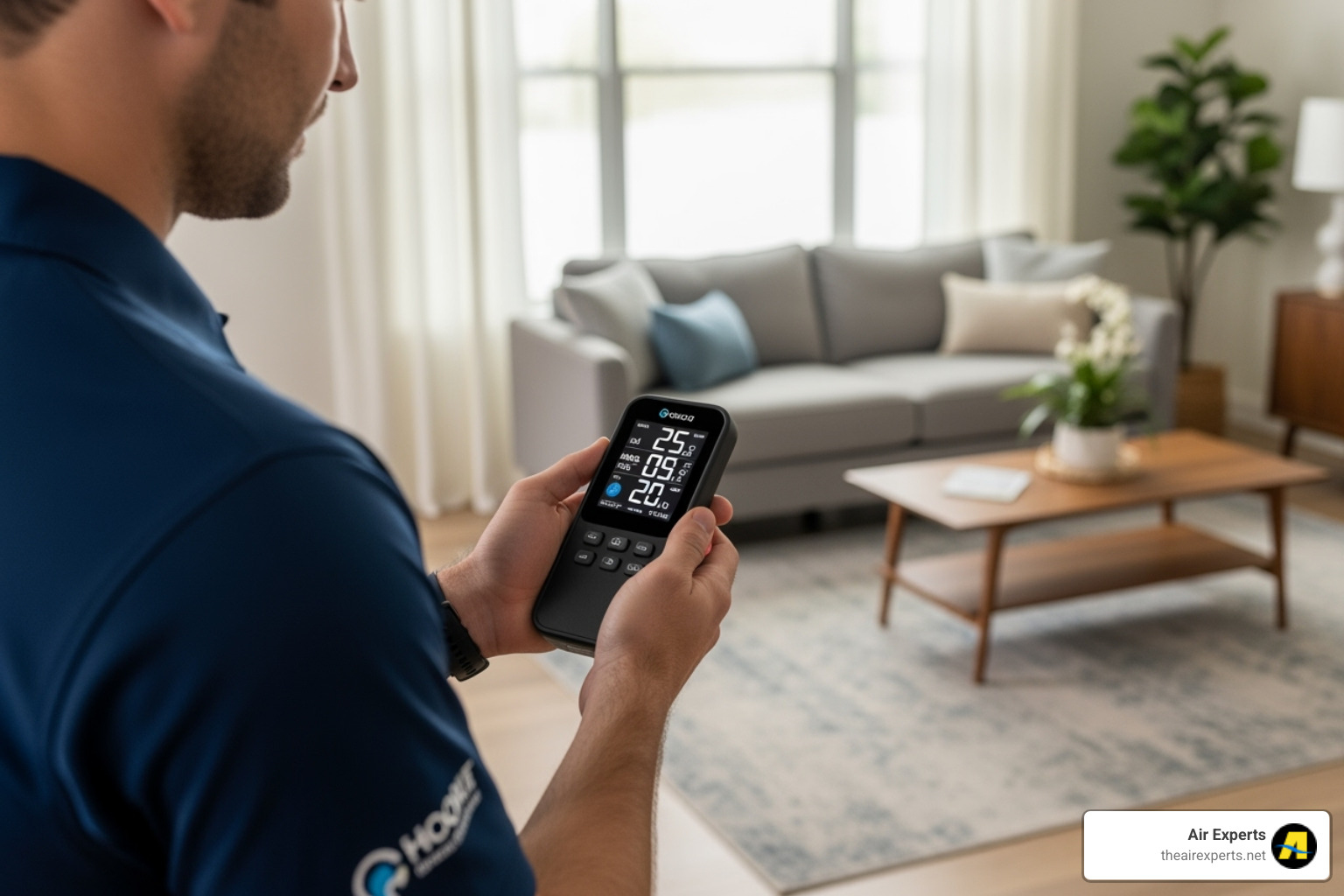
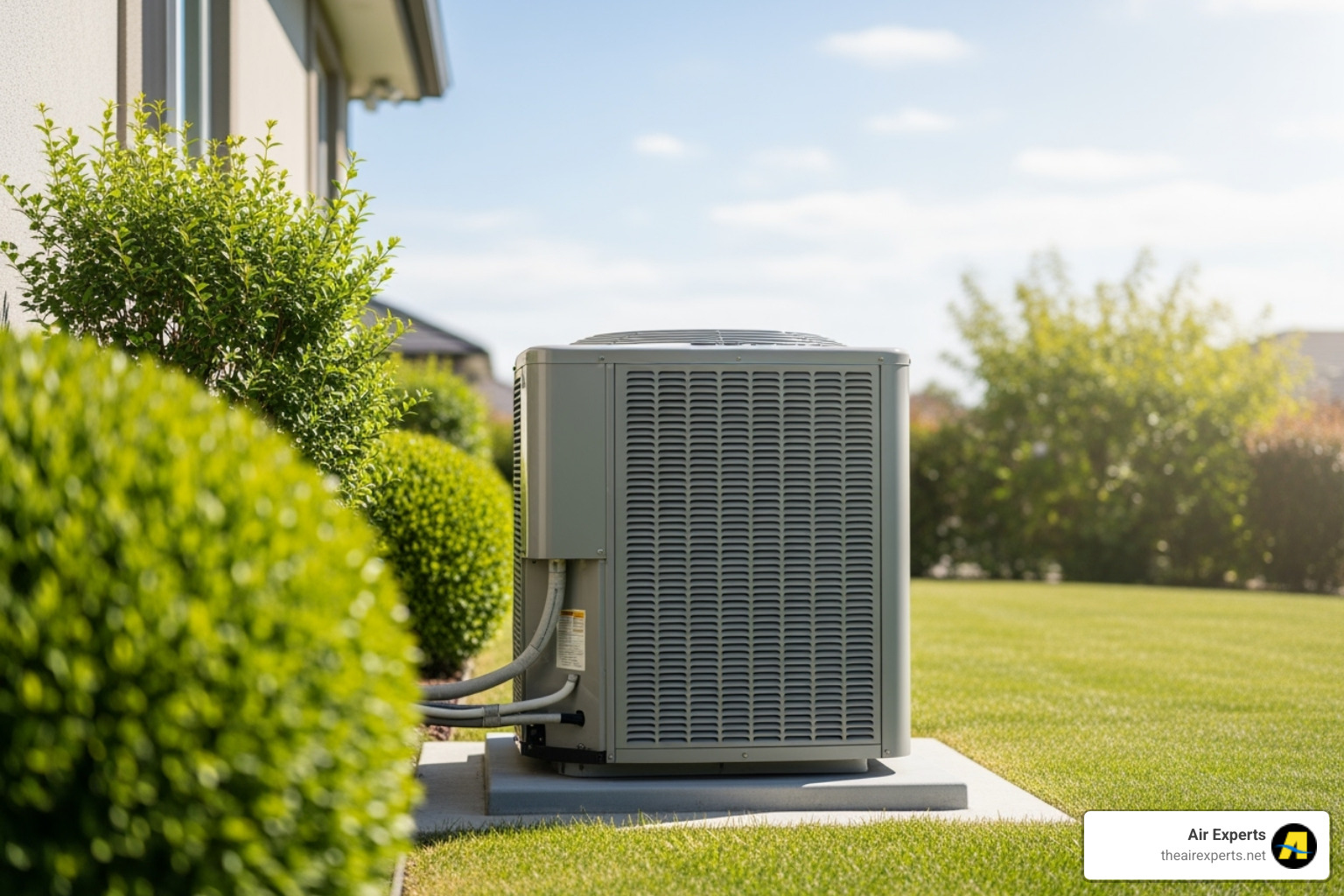


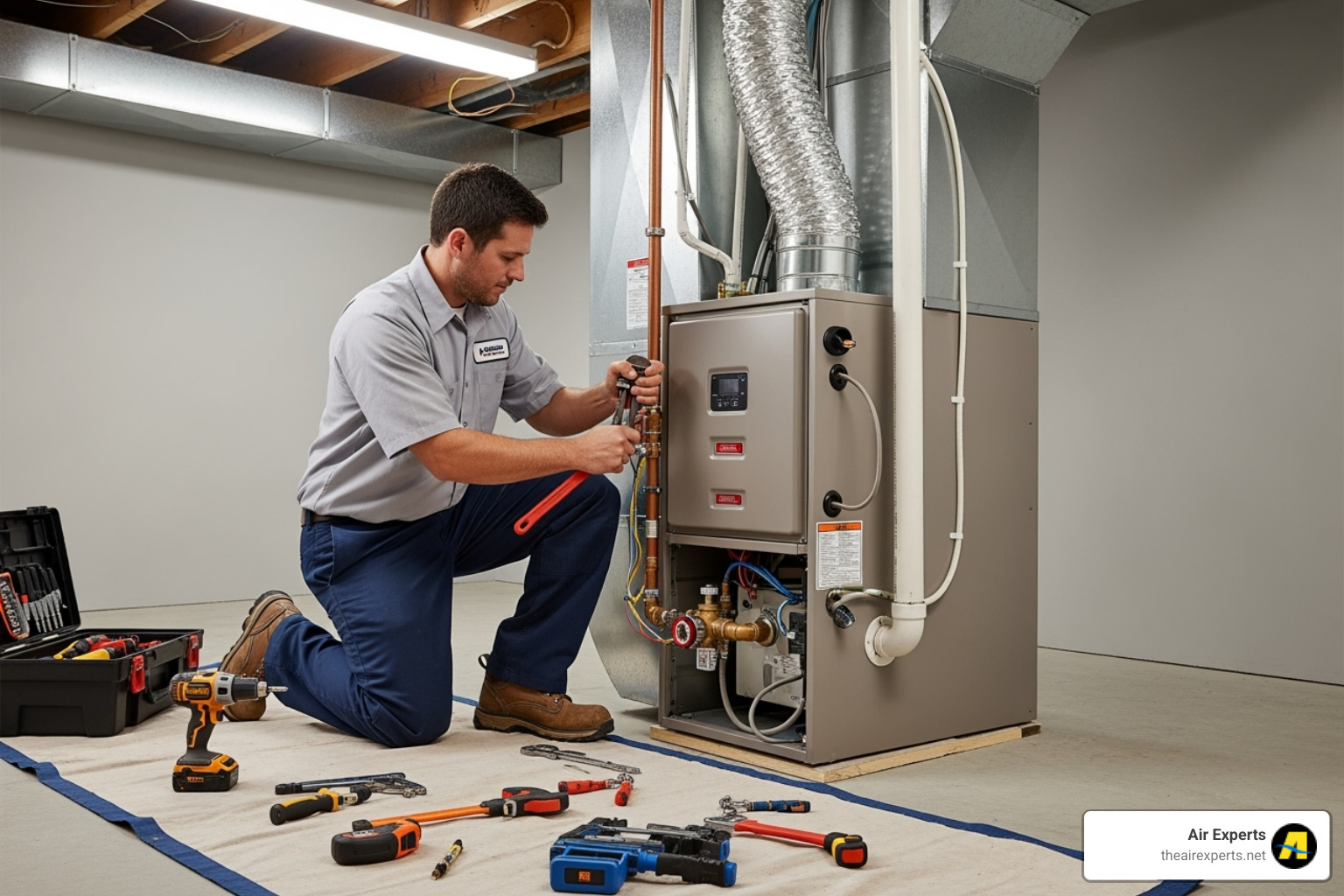
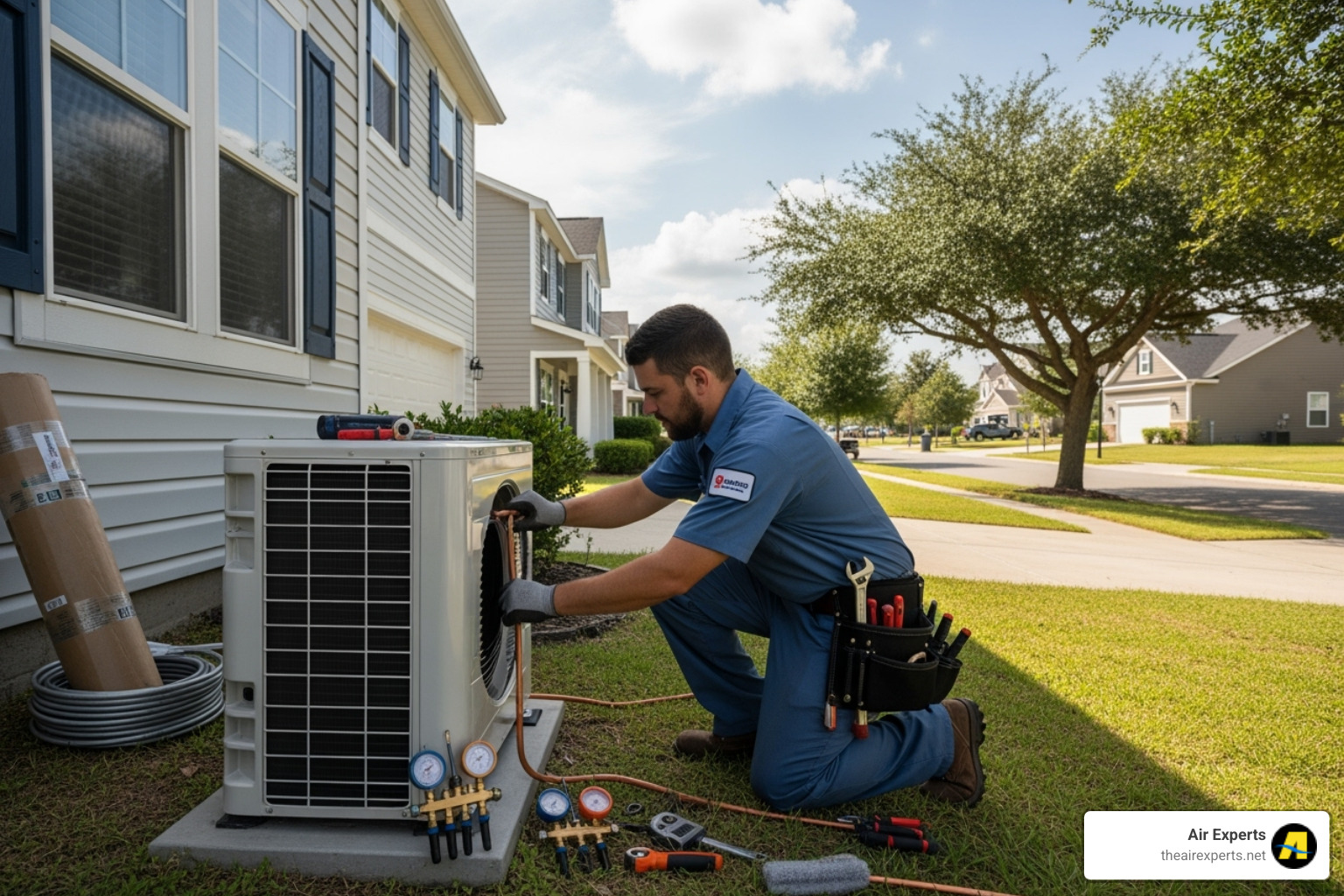
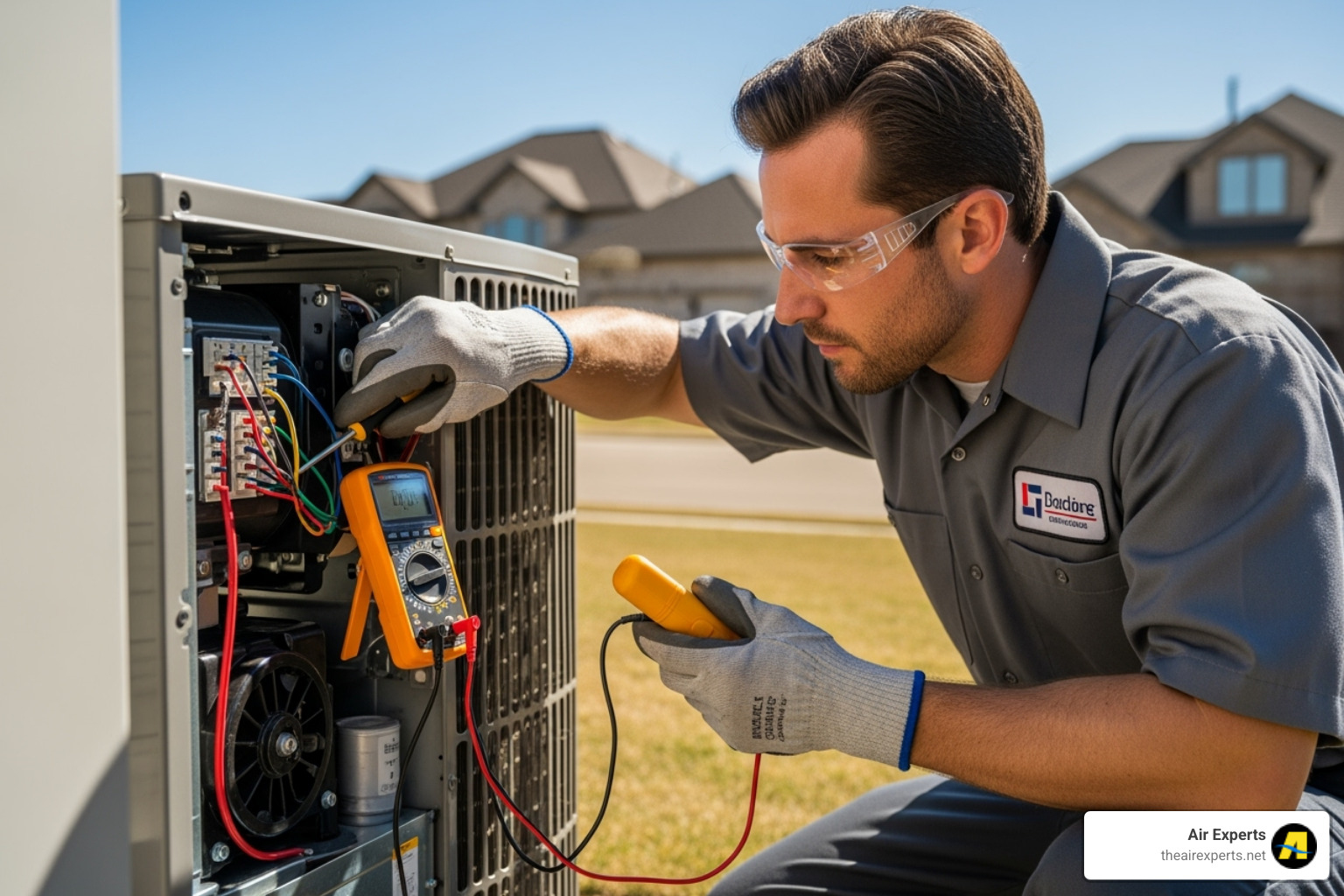

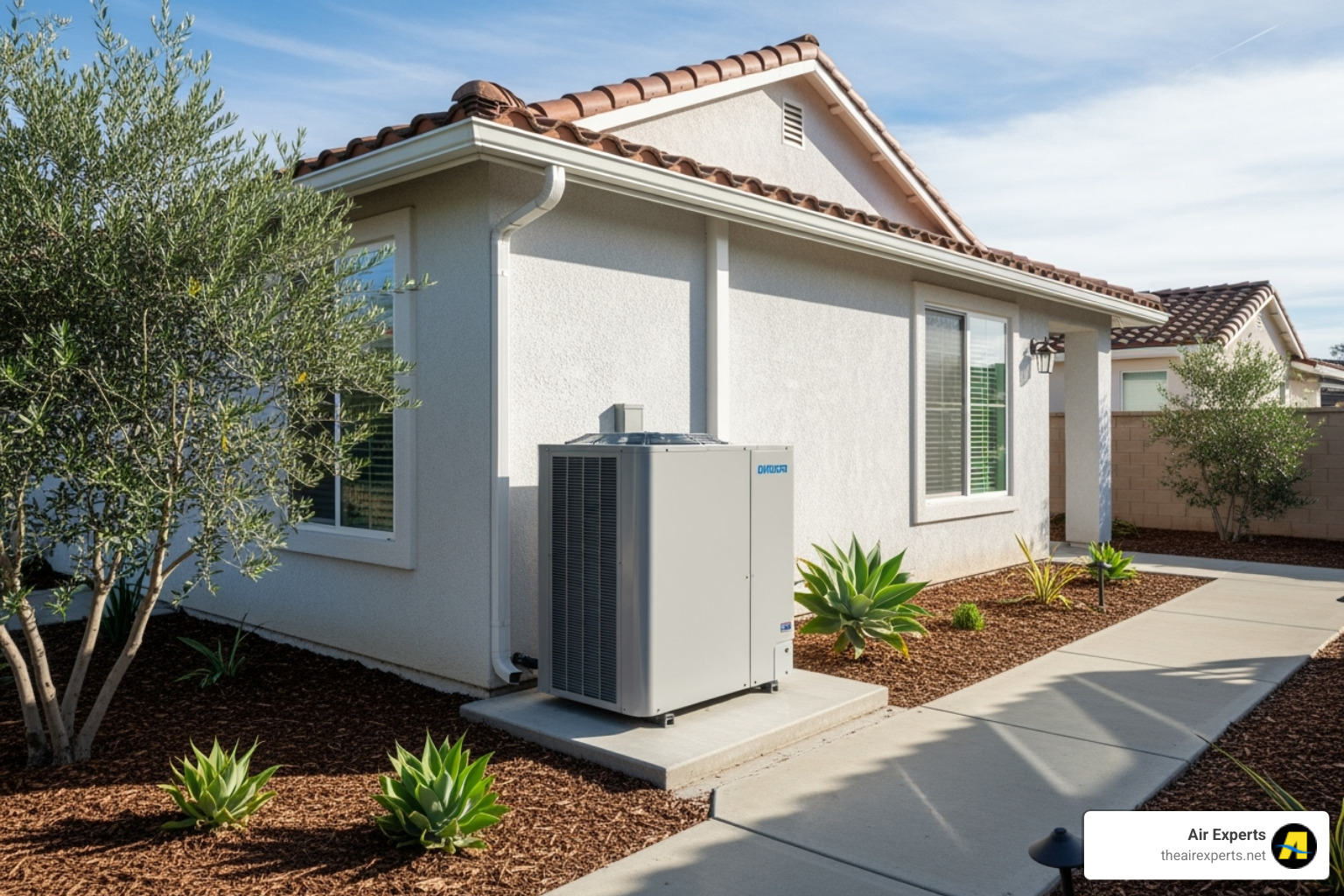
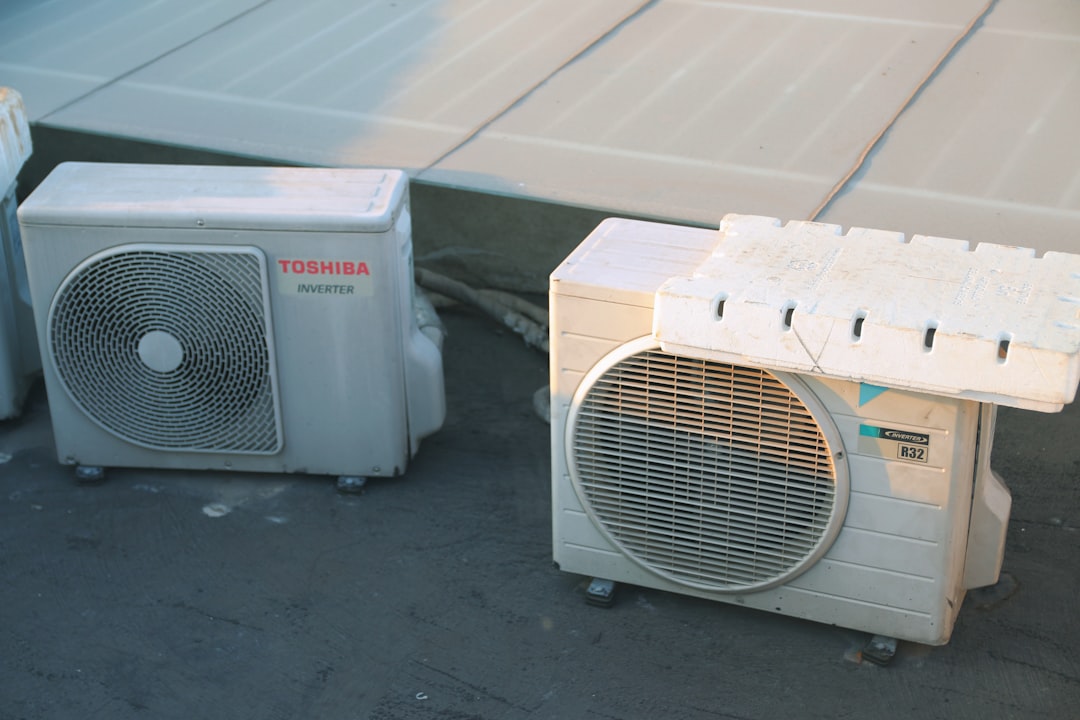
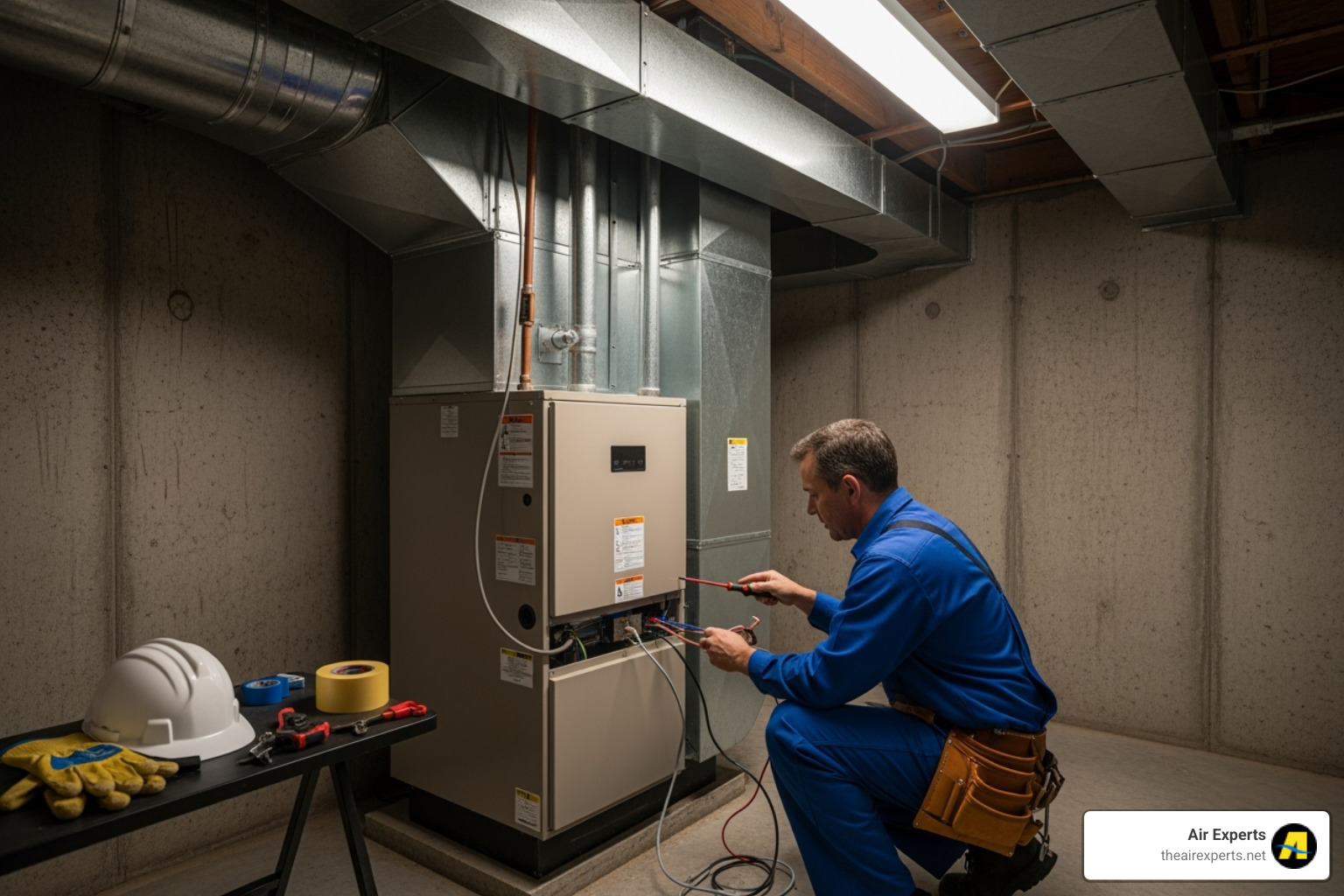
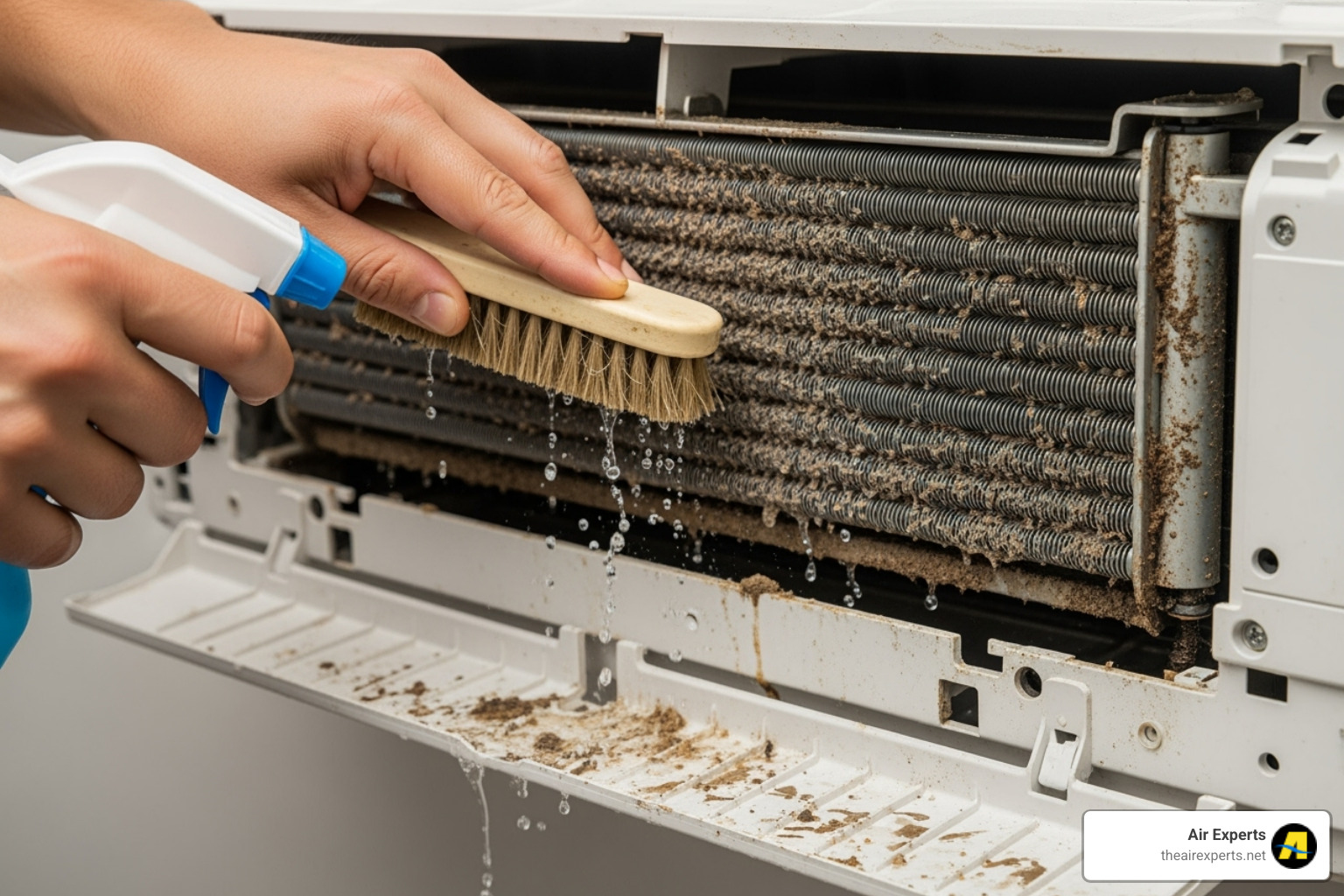
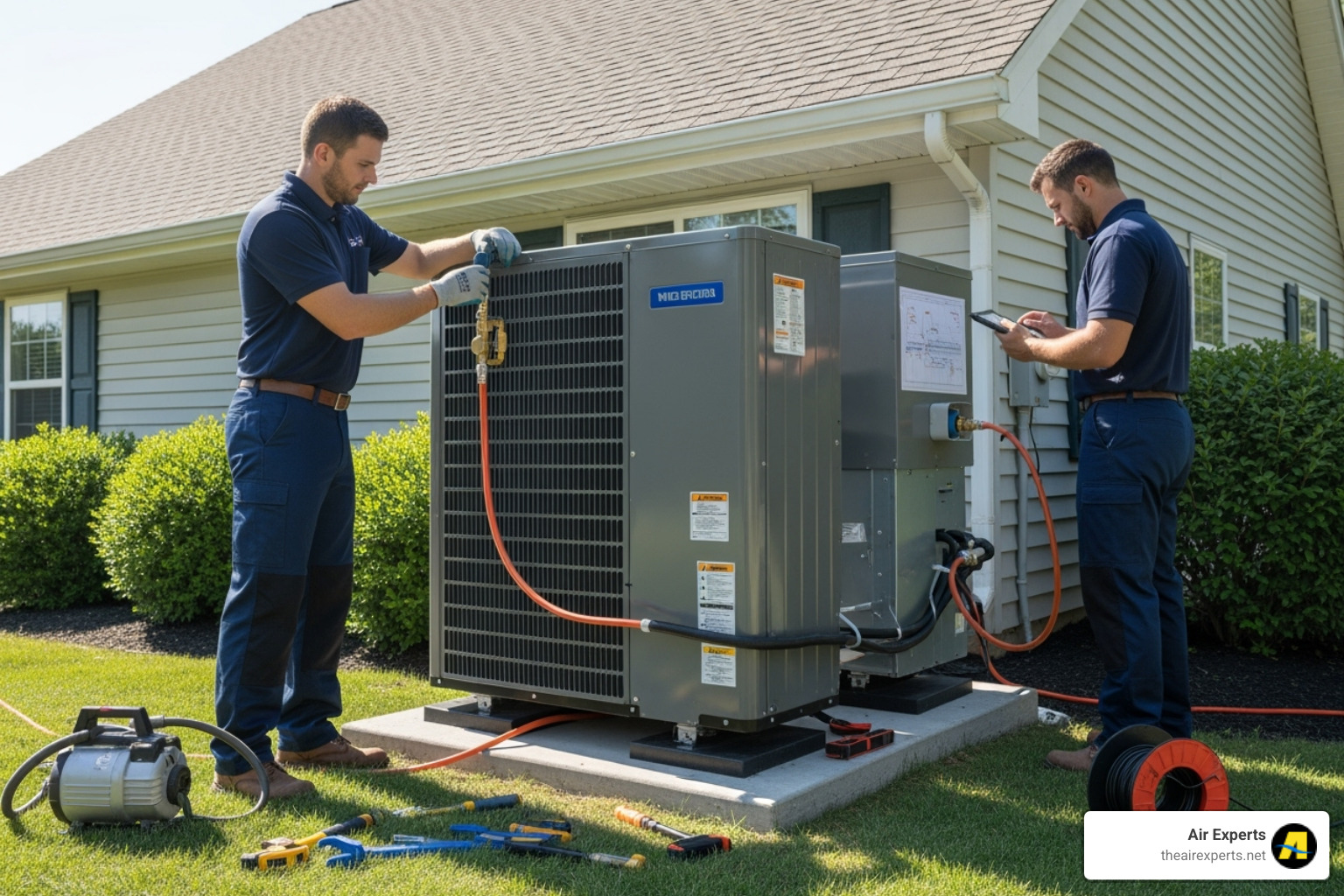

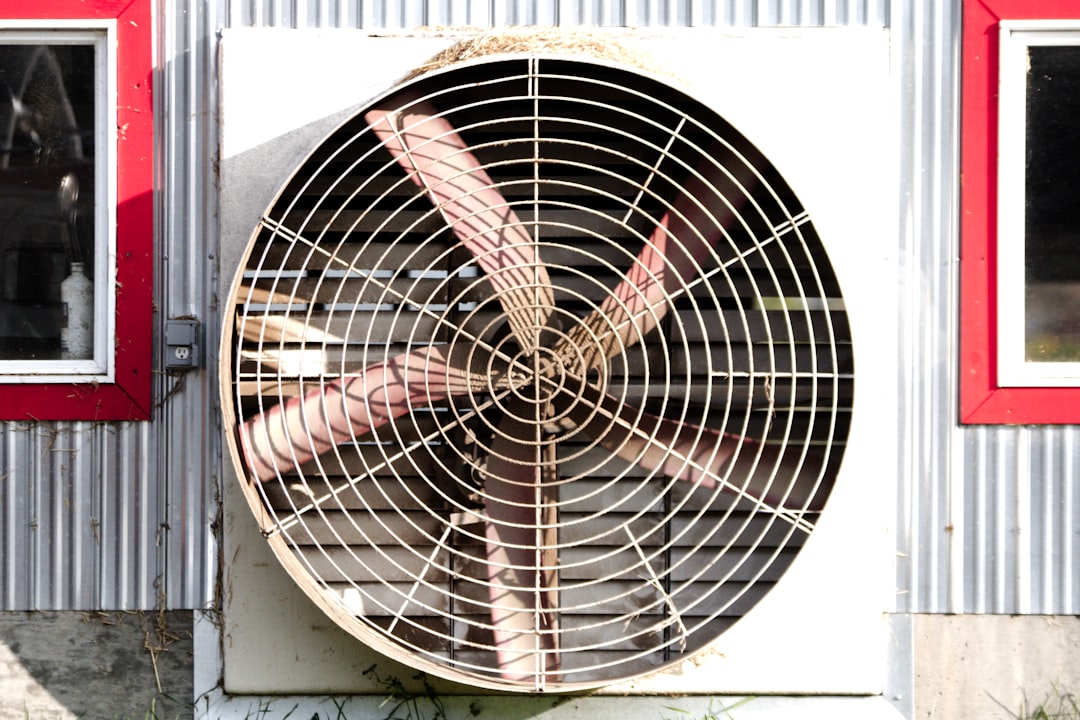

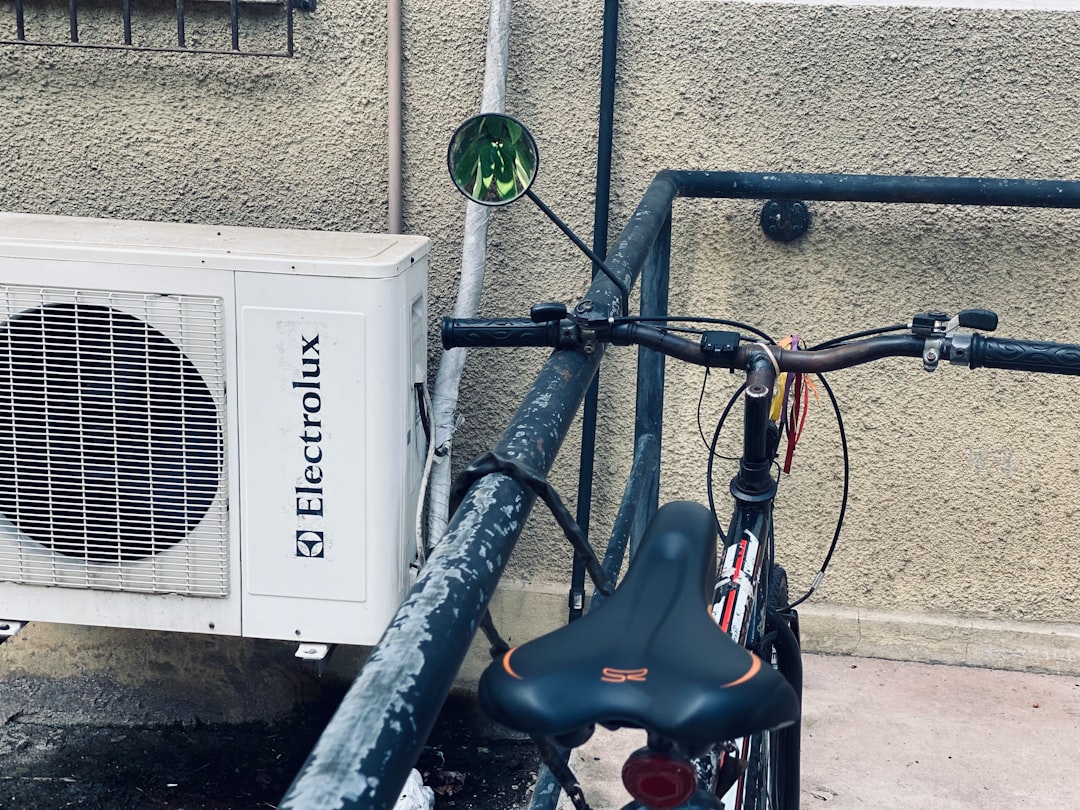
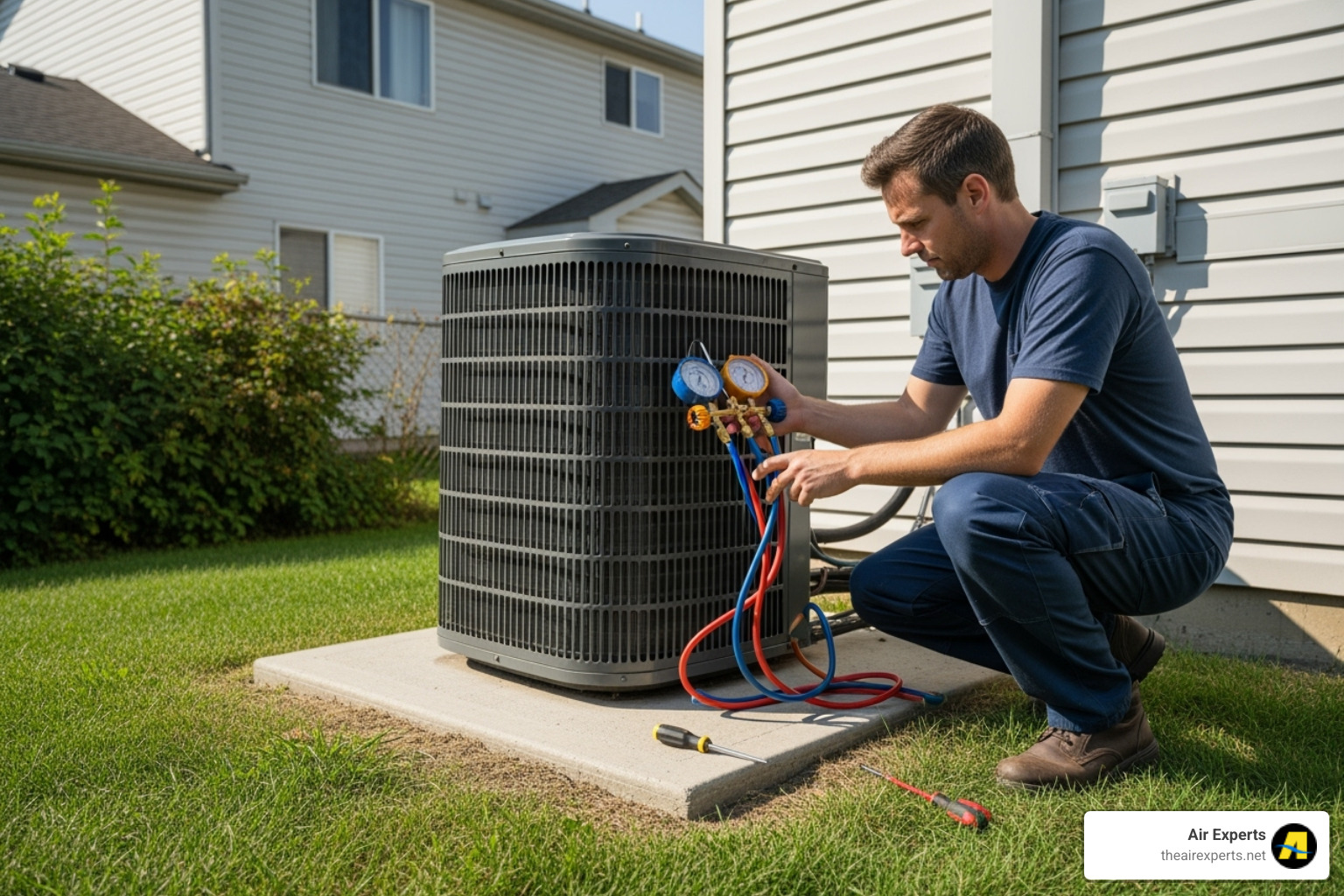


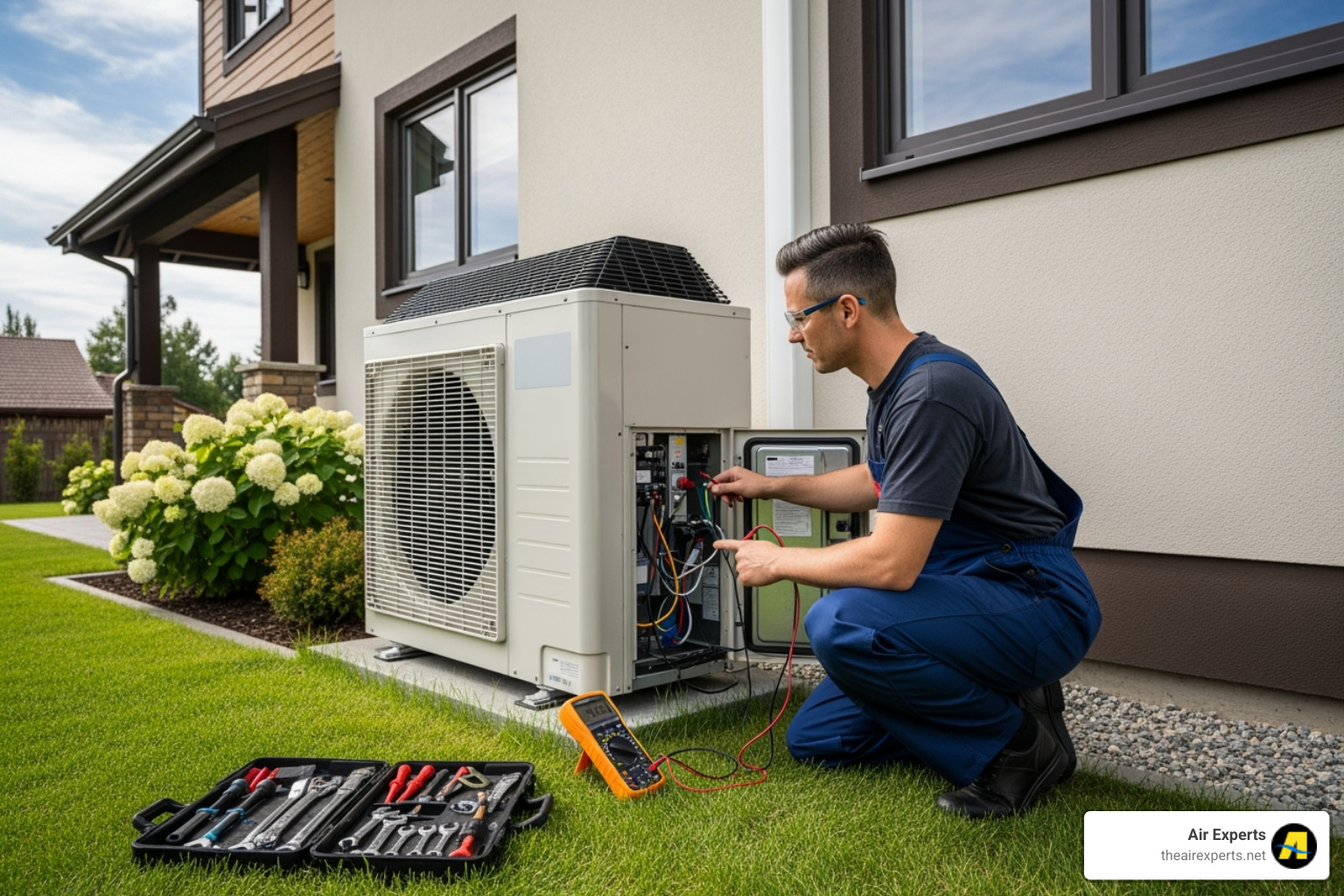
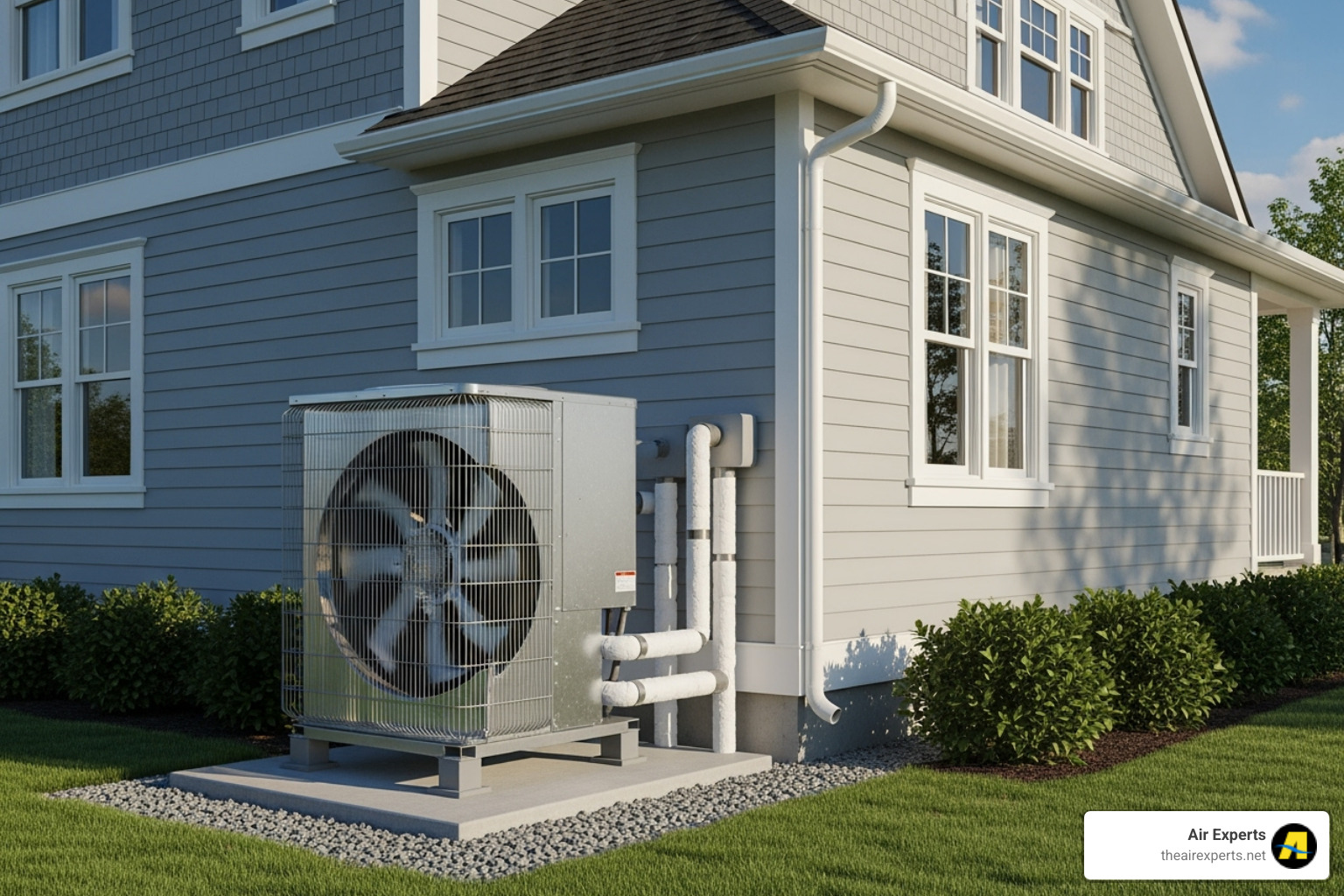
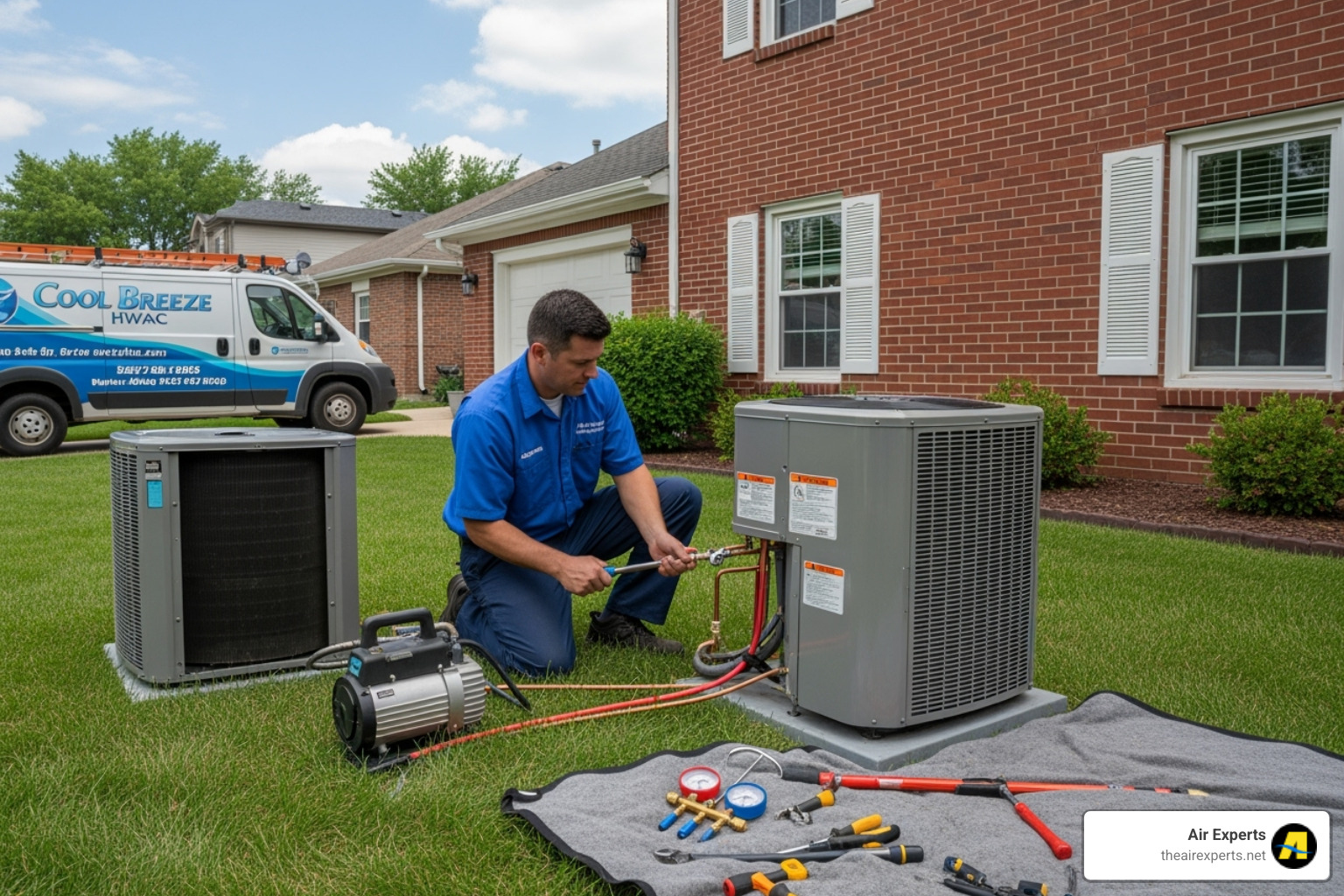

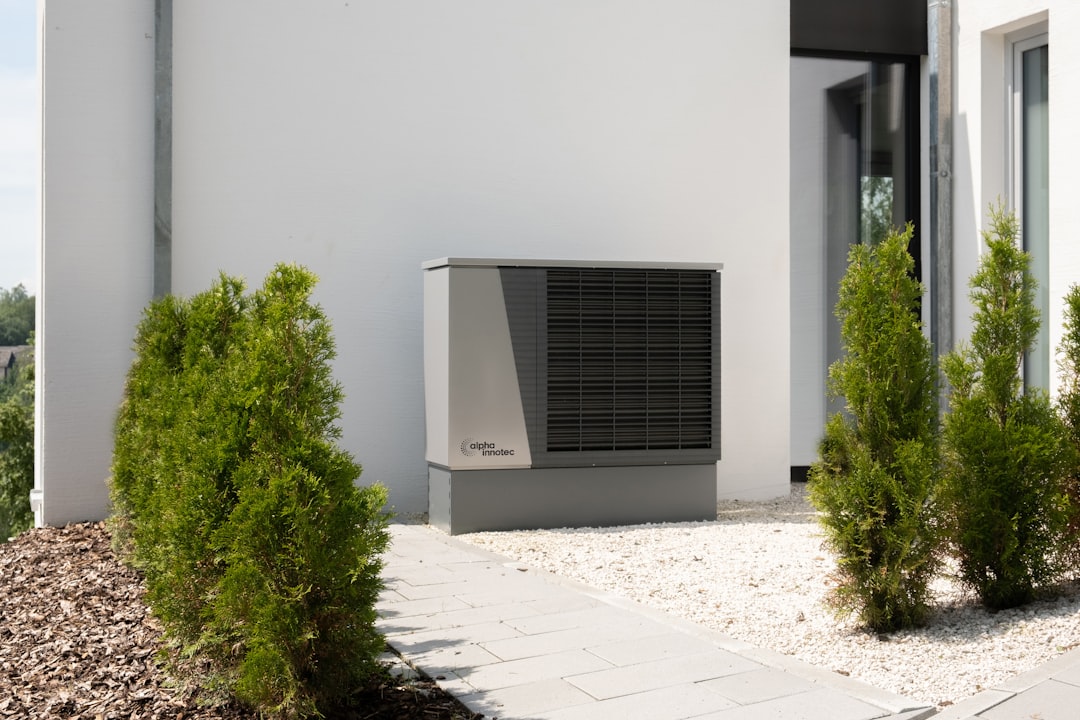
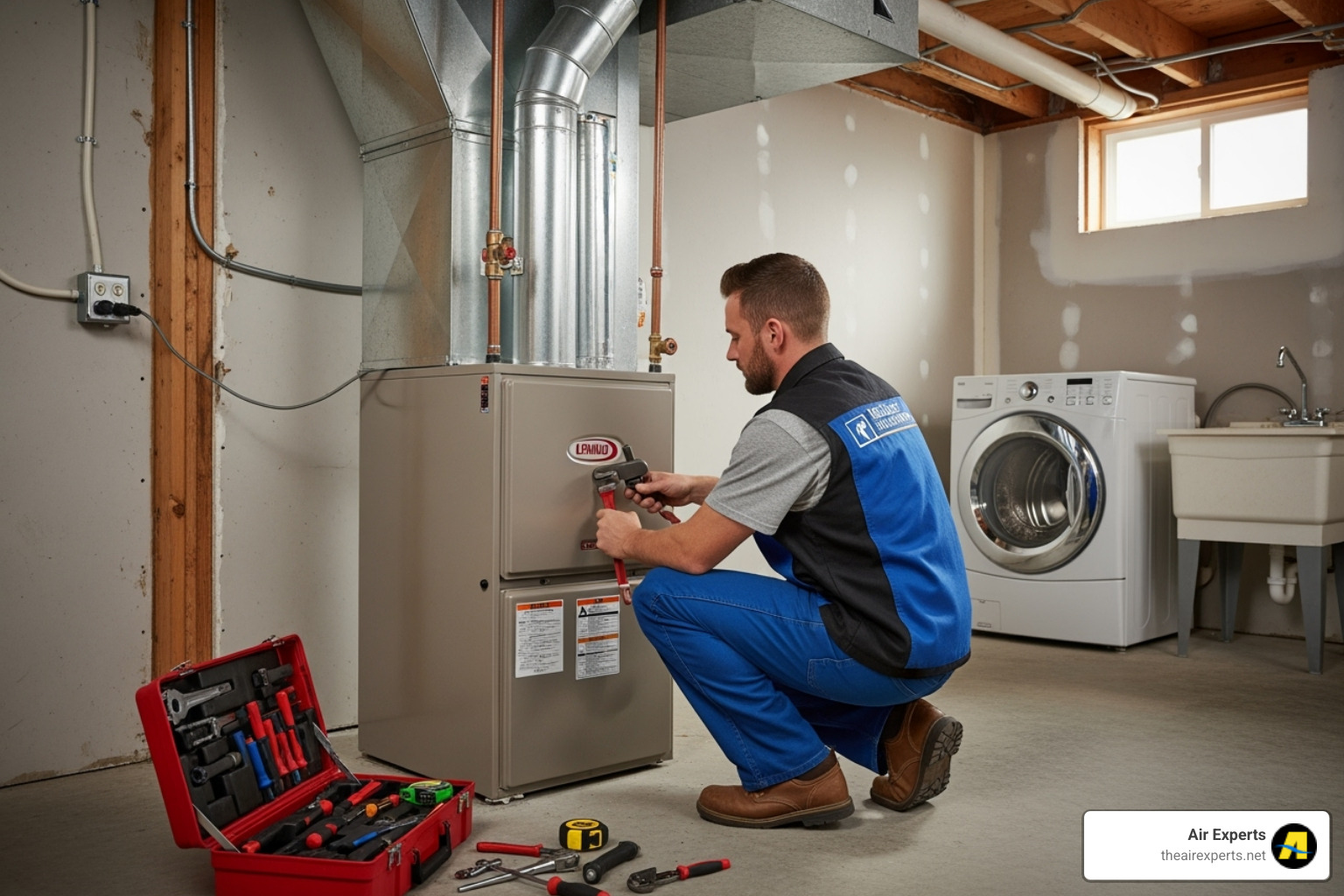
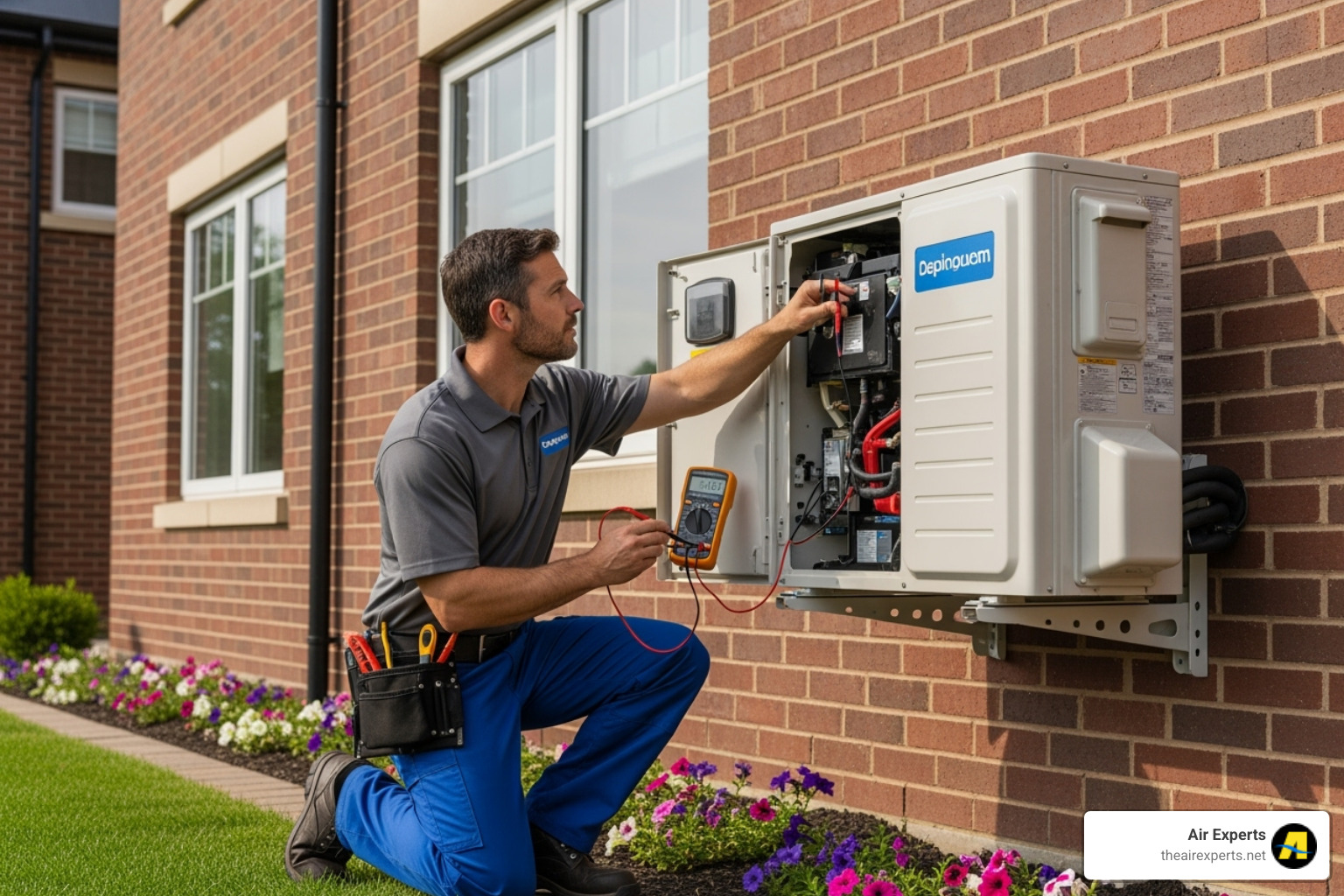
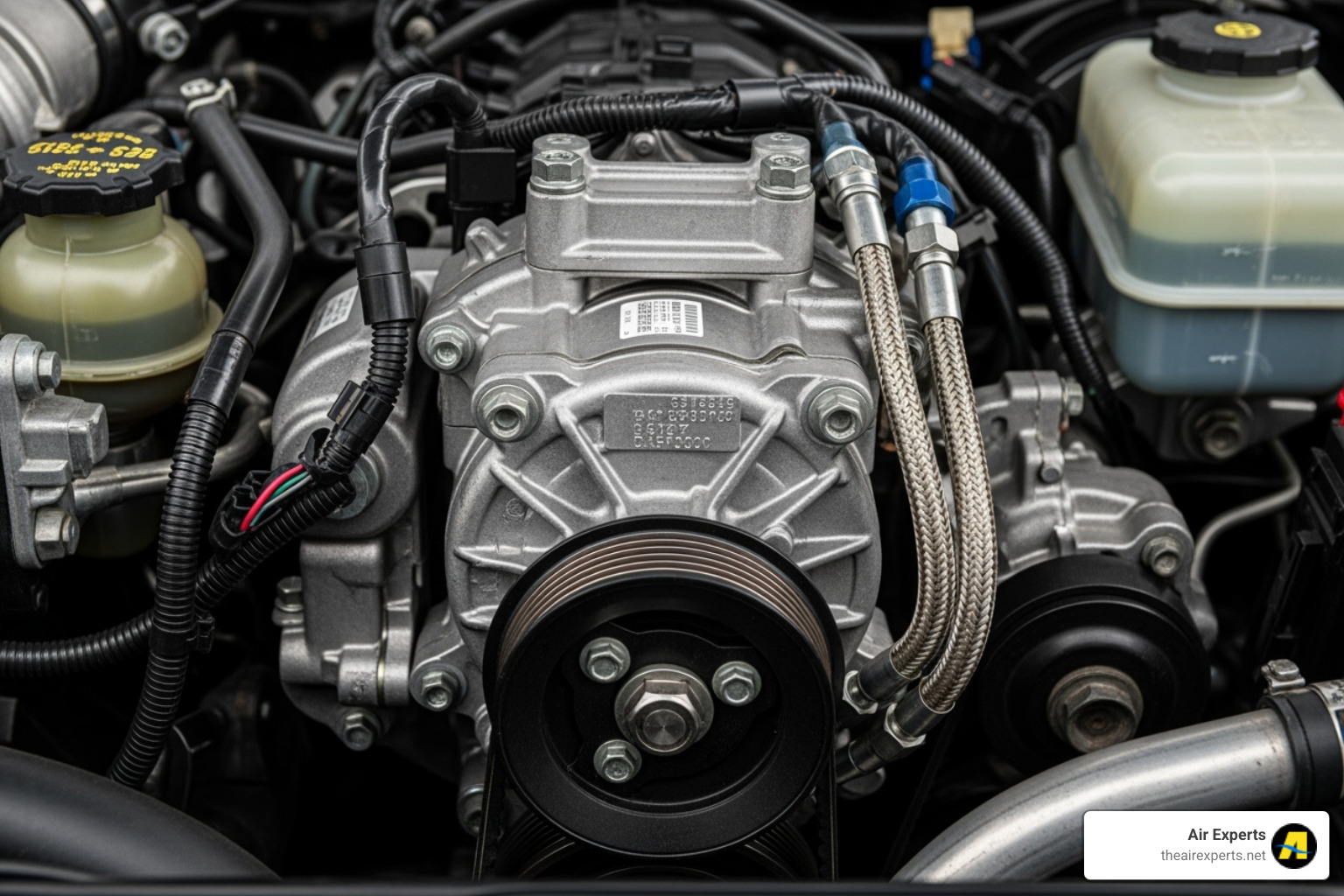

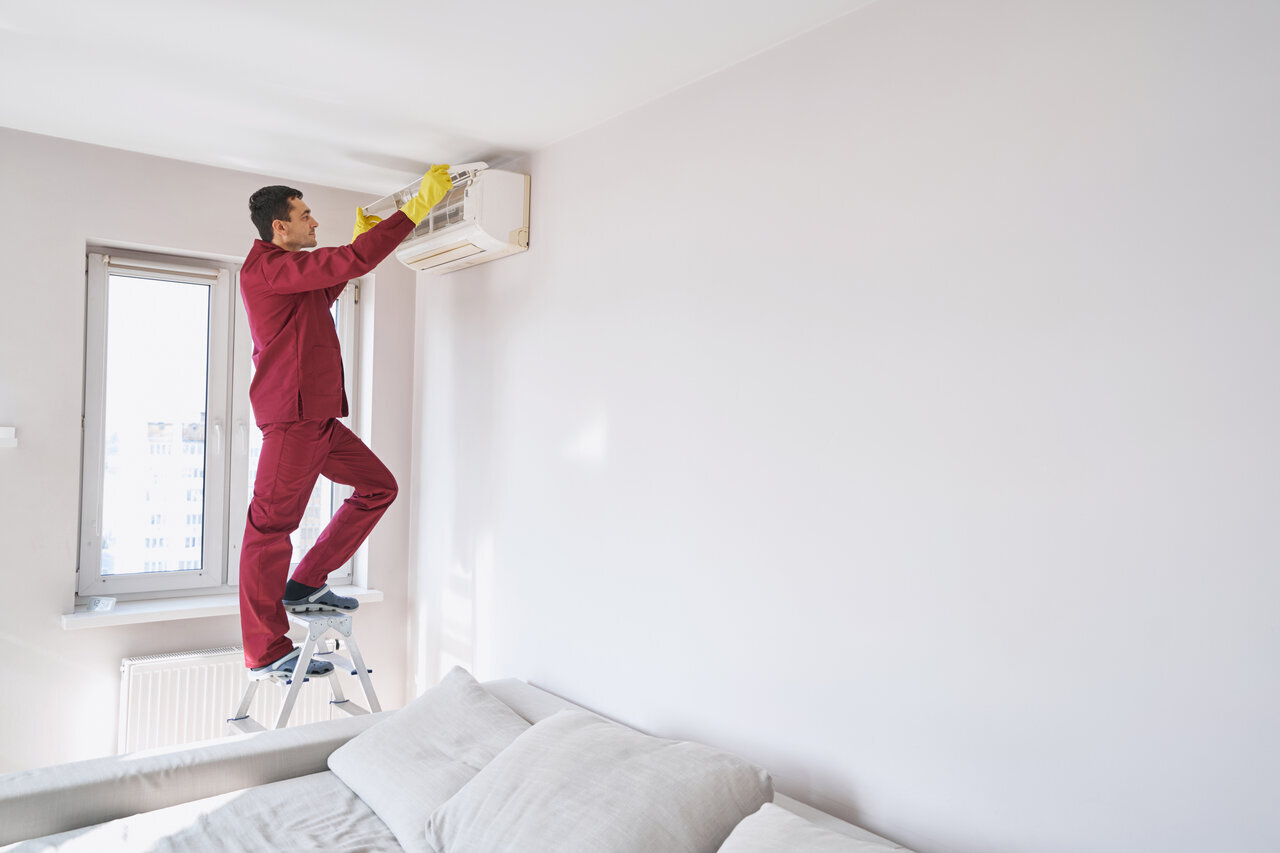

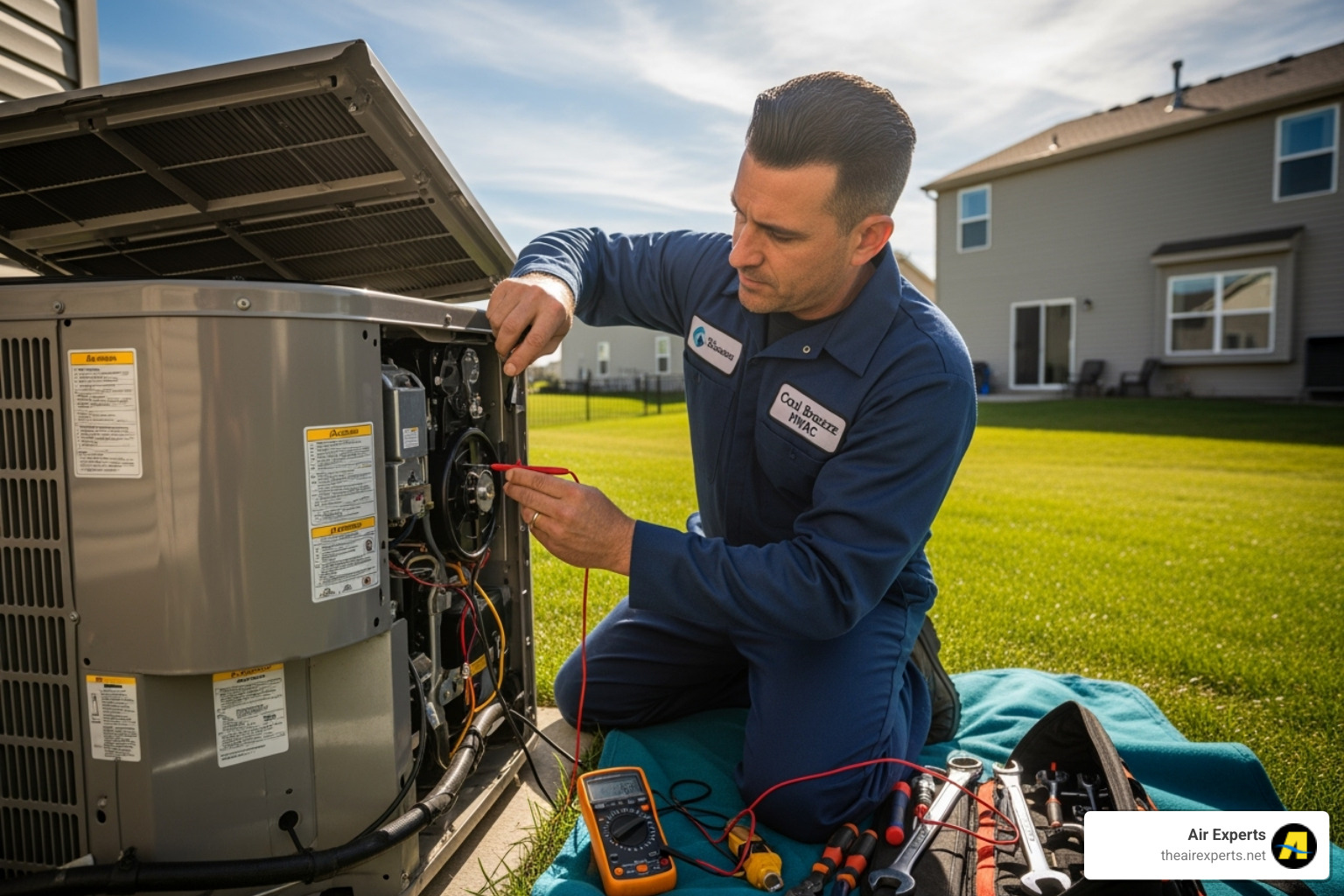


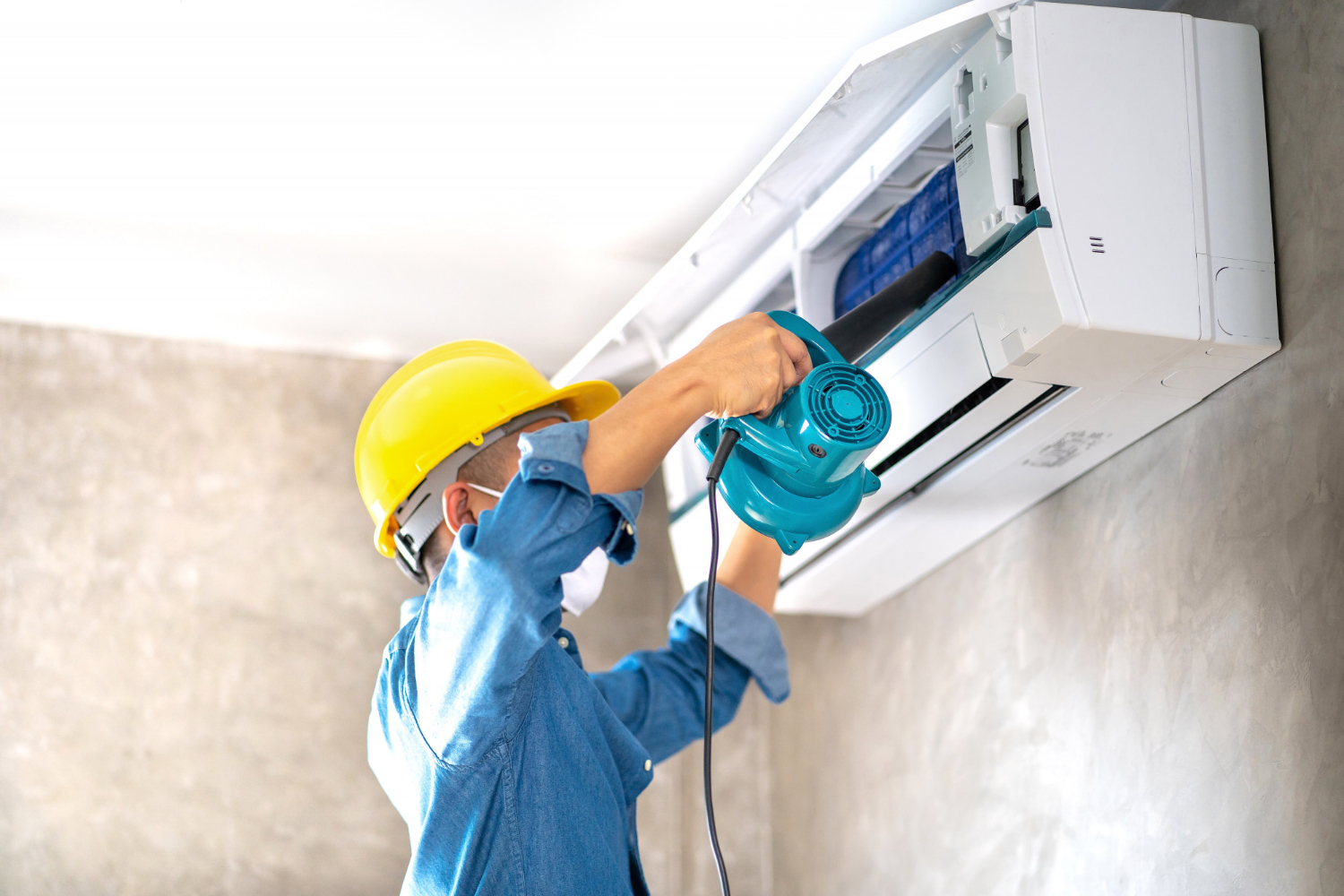
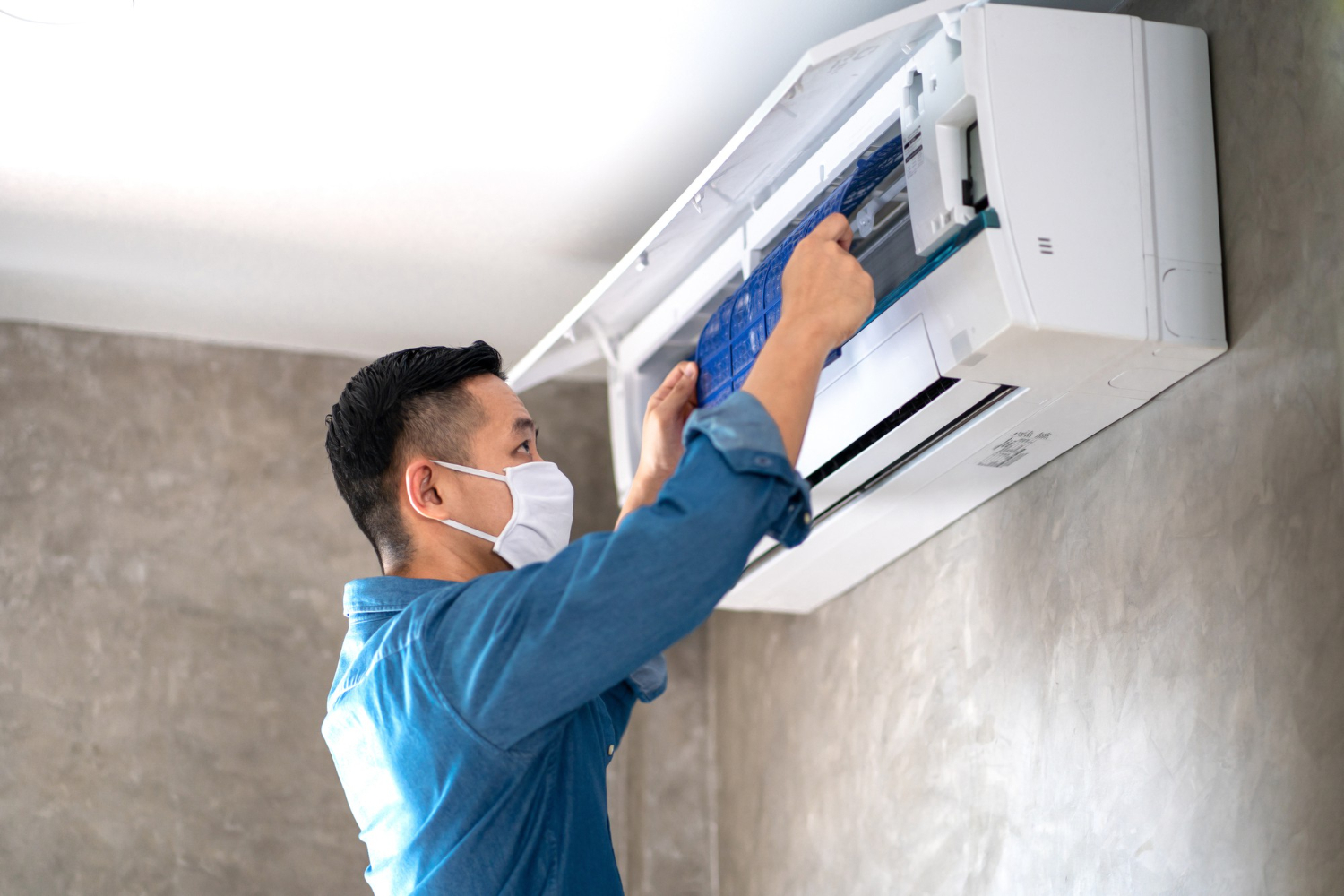
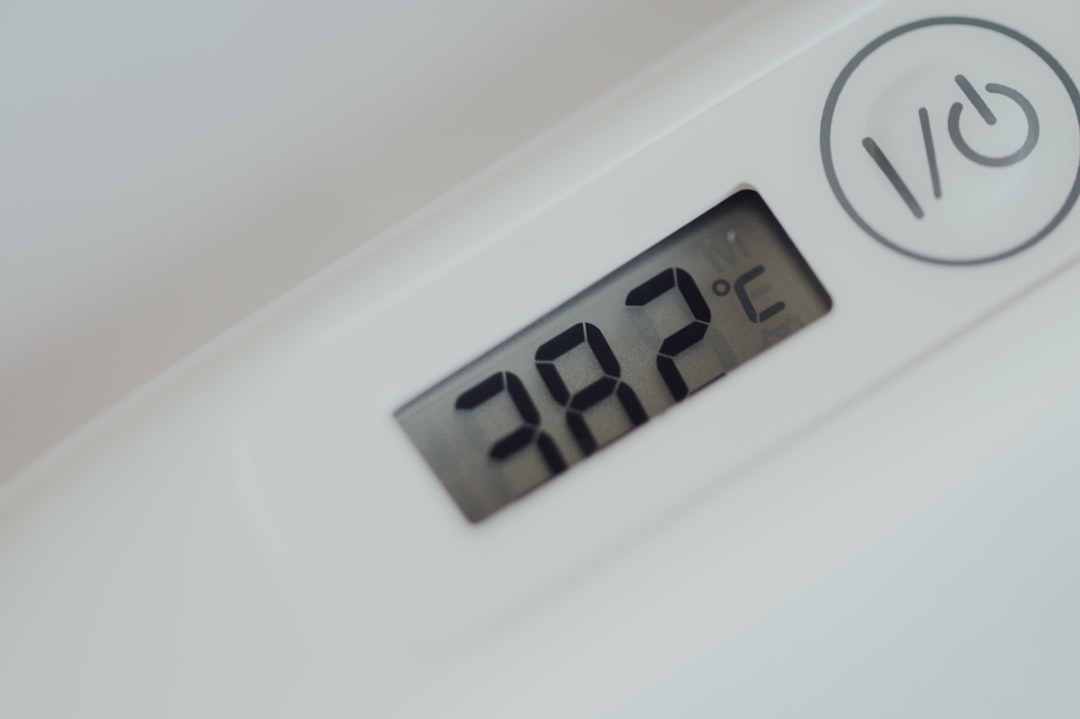

.png)
.svg)
.svg)




.svg)
.svg)
